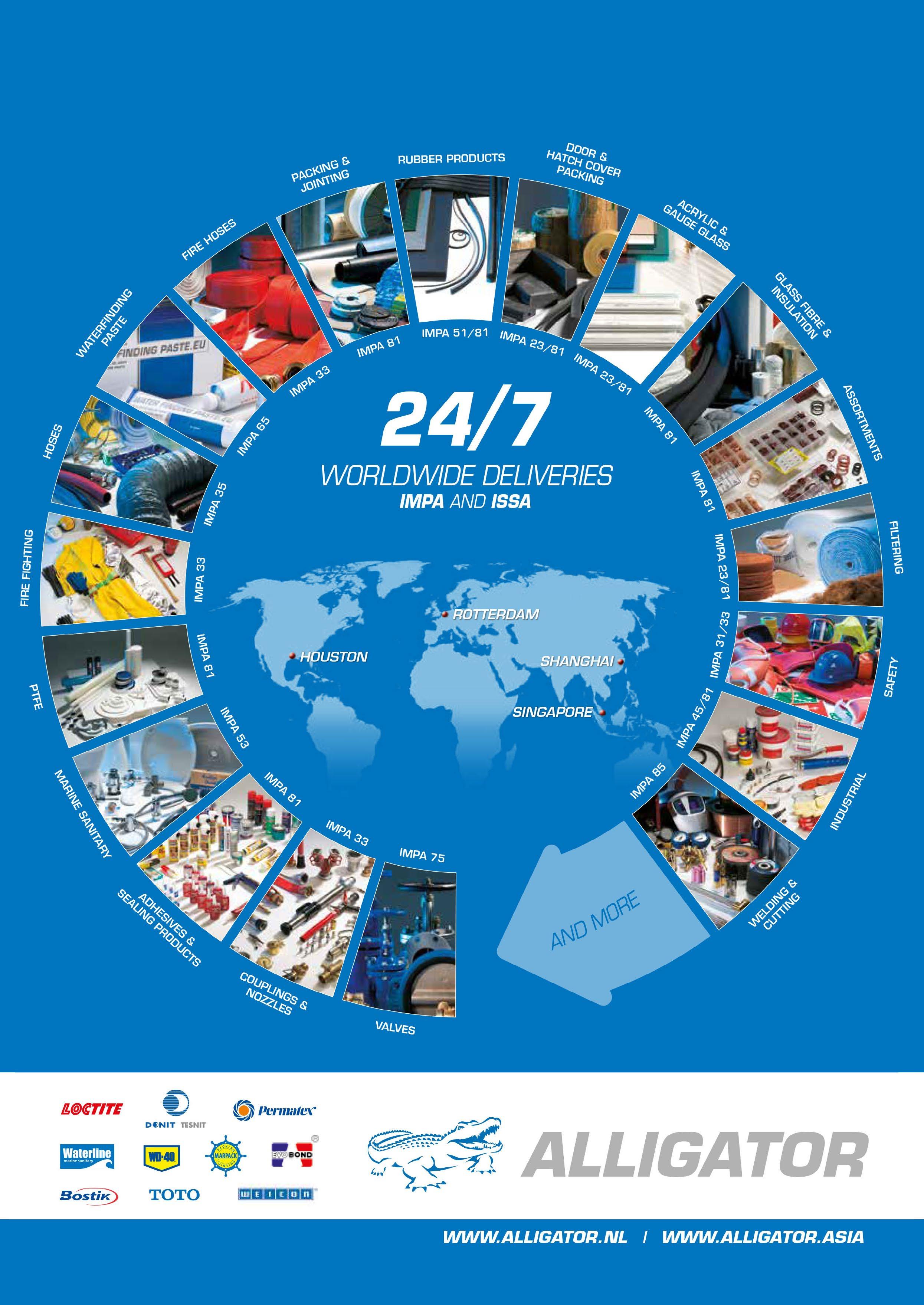


































elcome to the latest issue of The Ship Supplier.
Without doubt, 2021 has once again been a challenging year but ship supply has proved its resilience as we all look to slowly emerge from this dreadful pandemic.
Trade has opened up, shipping markets have started to surge and hard-hit sectors like cruise and containers have started to stage a recovery. Long may it continue.
It has also been a very busy three months for ISSA. Our European entity OCEAN held its first in-person Board Meeting since before the pandemic hit and it was great to see our OCEAN friends in the flesh, so to speak.
The correct social distancing and protective measures were adopted and the meeting went off without a hitch. The choice of Brussels as a venue was perfect as it was centrally located for the majority of those who attended.
Our thanks go to the OCEAN Chairman Wolfgang Sump and the OCEAN Brussels Secretariat for organising the event. Special thanks also go to Dominik Schnichels, Director of Customs at DG TAXUD, who addressed the meeting so eloquently and informatively.
Due to the COVID travel restrictions, ISSA’s 2021 Assembly meeting will go ahead virtually on December 7th and we look forward to meeting more of our ISSA friends then.
This important meeting will follow our November Executive Board meeting – again on a virtual platform. Zoom and Teams have proven invaluable during the pandemic and continue to do so, but the sooner we can all get back to meeting as normal, the better.
I am delighted to announce that we now have a new version of the ISSA Quality certificate which incorporates our GREEN ISSA initiative. It also provides further information and a breakdown of what key ISO principles have been incorporated into the ISSA Quality Standard. The ISSA Secretariat will send out a mailshot to ISSA members about GREEN ISSA followed up with an article in TSS about the initiative.
You can keep up to date with the latest news on the ISSA website at www.shipsupply.org and send in your comments and views to the ISSA Secretariat either by phone on +44 (0)20 7626 6236; Fax +44 (0)20 7626 6234 or alternatively email secretariat@shipsupply.org
The issue of the next ISSA Convention will be discussed over the next few months, and I hope to be in a position to give you more details in due course. Needless to say, we will make the right decision based on what is safe and right to do at the time.
For now, as is the ISSA tradition, I would like to wish you all continued success in the always exciting world of ship supply.
Saeed Al Malik ISSA President












s must be true in many areas, the United States has gone through a rather complete consolidation. Where once there were many independent ships chandlers, there are now a relative handful.
It has meant that a once thriving national association has had to be shuttered and any remaining members have had to become associate members of ISSA.
The National Association of Marine Suppliers (NAMS) the United States’ association no longer exists. This was a real signal of the extent of the changes in our business.
At the same time though, those of us who survived are benefiting.
Then, of course, the COVID Pandemic arrived. As suppliers, we were declared essential and were excused from the national lockdown.
In fact we were quite busy during this period and despite the difficulties of working in the changed environment, we continued operate.
That – at least in our case – no-one became infected was a real boon. Interestingly the pandemic caused a number of additions to our business model.
The “last mile” part of our business (doing deliveries not sales) increased exponentially.
For instance, three cruise ships were moored in Norfolk harbor through the summer of 2020 with a crew that, as many others locked down, purchased enormous quantities on-line that we delivered weekly.
As the pandemic abated and the United States began to recover, we have experienced many of the problems that have plagued the entire world.



While our container port only suffered minor delays for container vessels compared to bigger ports, other sectors were affected.
We are a bulk port with numerous coal piers. As mines shut down and miners are hard to find, vessels began long waits for cargo. At present many bulkers are waiting 4 – 6 weeks for some cargo.
This, of course, causes delay in supplying at the dock. Our launch/barge deliveries are very expensive compared to other countries, so there is a great deal of hesitancy in using them.
Most companies, of course, prefer to wait.
At present, while our businesses in the United States are relatively successful and healthy, we face a number of challenges.

Inflation has become an issue, with costs changing from week to week with the added problem of keeping our customers aware of the difficulties of providing goods at what were once reasonable prices.
Then we have the labor shortages. While we can offer good work and more than enough hours, we have to compete with the rest of the economy that is bidding up the cost of scarce labor.
I foresee this to be one of the harshest realities we will have to face here.
In all the next few years will be hard to predict and we will all have to be nimble to survive and prosper. u
www.peltzmarine.com
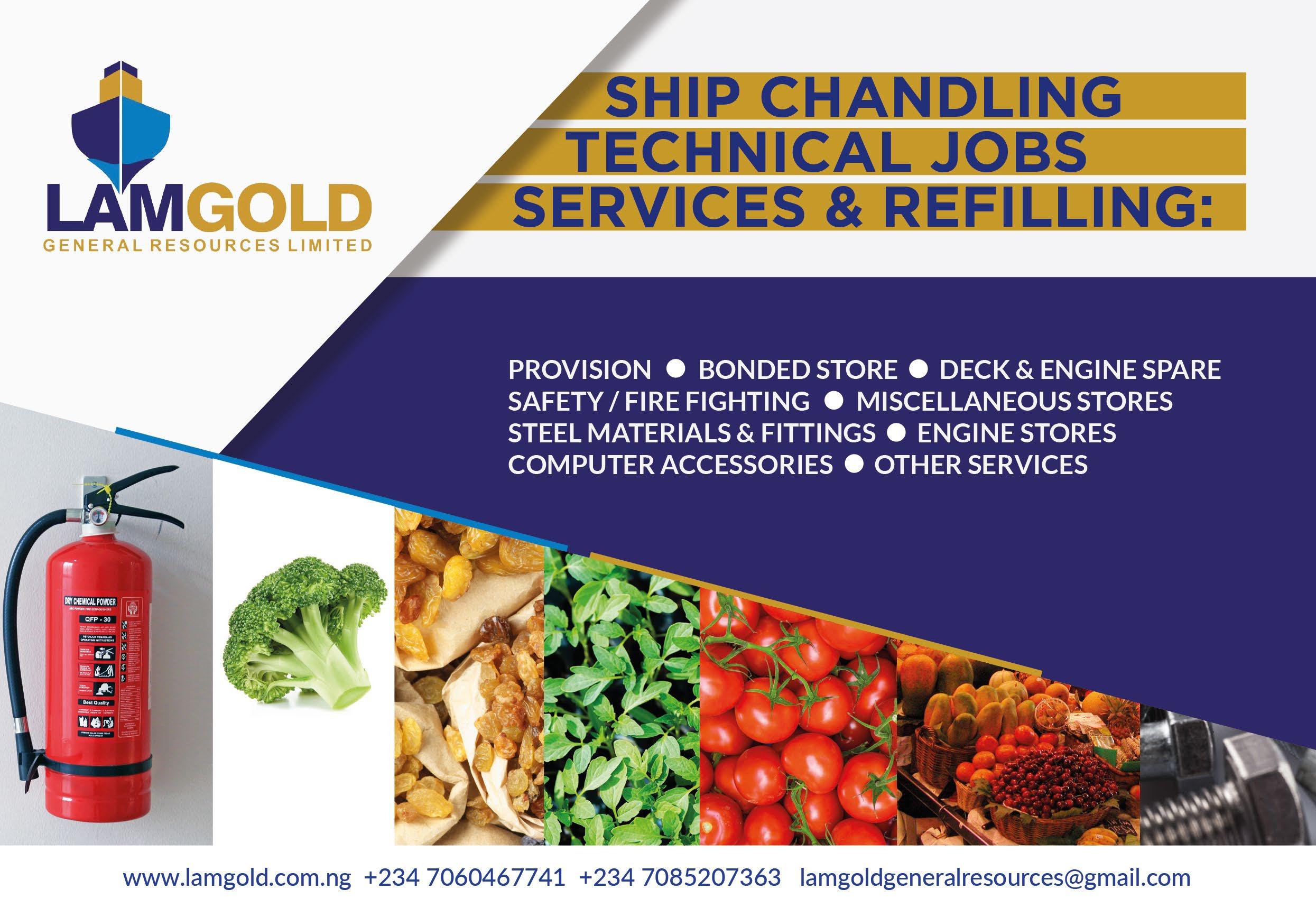







D. (Rocky) Rocksborough-Smith, President Canadian Shipsupply & Services Association, reports on the vast country’s pandemic pandemonium but spies green shoots of recovery on the Eastern Seaboard
As I suspect it is in most ports round the world, COVID-19 has rendered ship supply in Canada considerably more difficult during the last 2 years.
As most know, Canada’s three major port areas are separated by huge distances and can have entirely separate regional issues. However during COVID the issues are strikingly similar.
On the West Coast at the Port of Vancouver, Tom Kravariotus of United Maritime Suppliers Inc. reports that they no longer allow their drivers on board. All paperwork is emailed and any cash payment is brought down the gangway. Their company mask policy which was abandoned during the summer is now back on as numbers have again started to rise. Lead times for receipt of goods ordered is getting much longer

and logistically everything is a nightmare, especially if goods are coming from the United States. The only positive note is that vessel deliveries are now much quicker as drivers are no longer delayed alongside while the crew checks the order.
Across the country at the Port of Halifax, some 5800 kms. and a four and a half hour time difference distant, Peter Michalak of Blue Water Group advises that they are seeing a slow ship supply recovery coupled with a modest increase in petroleum traffic. There is however a significant demise in tonnage for bulk carriers throughout the Atlantic Canada Region. As in many markets, the supply chain is broken and back orders are hard to fill due to global supply issues.
Now to Central Canada, the St. Lawrence Seaway and Great Lakes Region as reported by our ISSA representative and Vice-President of our Canadian Association, Robert Zeagman, Seagulf Marine Industries.
All was normal heading into the 2020 Shipping season until the first week of March when Canada went into a complete shutdown with hospitals becoming overloaded with people contracting the COVID-19 virus.
Any vessels in Canadian waters at that time were suddenly either kept in various ports or were kept at anchorage and not allowed to dock. All borders were closed with the exception of the trucking of goods between Canada and the United States.

All this with the St. Lawrence Seaway (gateway to the Great Lakes) which was supposed to open the end of March. Eventually, the Seaway System did open a short time later but traffic was severely limited.
Crews on Foreign Flagged vessels were not allowed ashore and crew changes were prohibited. Everyone in the shipping business from Pilots, Ports, Terminals, Ship Owners and Suppliers were all scrambling to come to grips with ways to continue to operate and implement the necessary procedures to ensure the safety of all personnel during the processes of doing their business.
Where are we today? Although Canada has permitted limited shore leave for Seafarers throughout the COVID-19 pandemic, a number of restrictions that was imposed earlier are now being eased. The suggested maximum length of shore leave has been extended from four to six hours for asymptomatic, presumed non-COVID-19 carrying crew members.
Crew members and marine workers travelling to Canada to work on board ships continue to be viewed as essential workers who are important for the movement of goods or people. As such, they continue to be exempt from all current prohibitions, including entry bans, quarantine necessities, pre/post-arrival COVID testing and upcoming vaccination requirements. u

While ports, companies linked to maritime trade and traffic and commercial exchange between Colombia and Panama with the rest of the world have grown steadily for the last 10 years, Venezuela has stagnated.
Venezuelan ports, once a hub between North and South America, languish in the tropical sun as the days go by with their empty and sleepy docks.
The intense trade between Europe and the United States of America with Venezuela are part of a happy past of vibrating ports full of ships that worked 24 hours around the clock in an unstoppable and wonderful frenzy.
Hundreds of companies saw their payrolls grow each month to cope - efficiently and quickly - with the incessant flow of ships loading and unloading.
General cargo ships, container carriers, tankers and Ro Ro marched to the drum beat of tropical trade 365 days a year.
All the ports in the country were increasing their operational infrastructure by employing an increasingly huge number of people who found work in the

innumerable necessary service companies, among them the ship chandlers.
Today the Venezuelan Association of Ship Suppliers has disappeared. The few shipchandlers out there are torn between closing their doors or continuing to endure the storm that seems never to end.
In spite of everything my own company - Italmarine c.a. Shipchandlers - is still present as a member of ISSA and with its ISSA Quality Standard certification providing service in all Venezuelan ports to the few ships that arrive.
This simply confirms that being a member of ISSA will always be a guarantee of seriousness and quality in such a complex moment of the maritime trade in this wonderful Caribbean country and that all shipowners and charterers have someone to count on because ISSA is always where the industry needs it.
The current port authorities of Venezuela, aware of this situation, try to implement measures to recover the port industry, but whilst trade restrictions on Venezuela persist, there is no way out in the short or medium term. u


Already with 40 years’ experience and knowledge of supplying the maritime & safety industry, LALIZAS keeps on innovating and now introduces the Fast & Independent (F&I) Liferaft Exchange.
Having years of experience in the global market, by manufacturing and distributing lifesaving equipment worldwide, LALIZAS pays particular attention to listening & then to understanding their Partners’ needs, providing them with solutions that optimise a vessel’s operations.
LALIZAS F&I is a unique proposal to Ship Managers/Owners for a simple

and fast liferaft exchange with no contract & no commitment from the Ship Manager’s/Owner’s side.
F&I embraces the most beneficial aspects of the traditional liferaft ‘ownership’ model while also offering the operational benefits of liferaft ‘exchange’.
As a member of the F&I by LALIZAS, when a Ship Manager/Owner needs a number of liferafts, they can make the request to LALIZAS and will be then provided with immediate ownership of newly serviced & fully approved liferafts of same capacity & type with the ones that are currently on board (utilizing current stowage/cradle arrangements),

ensuring the vessel’s compliance with the IMO standards.
F&I is available in key ports around the world, with the support of 95+ Liferaft Service Stations authorised by LALIZAS as well as a great number of exchange hubs.
Regardless of the location where the exchange operation may take place, F&I offers the convenience of a single point of contact, which is LALIZAS, both for the management of liferafts’ due dates (monitoring system of 90-60-30 days) as well as for invoicing.
F&I has been designed without the need of complex agreements (no entry or exit costs) being purely customer centric. This is a genuine alternative to the traditional
‘ownership-service’ or to the ‘no ownership-rental’ offer which currently exists in the market today.
LALIZAS has appointed Malcolm Barratt as F&I Liferaft Network Development Manager. Mr. Barratt will be working closely with the Maritime Companies Commercial Department developing new business opportunities in the frame of the F&I.
Mr. Barratt, commented: “F&I is not about to take the place of the traditional ownership Service or Rental of rafts way of working with liferafts - if you consider that approximately two thirds of all liferafts in the world market are still owned by vessels and get a service when due. Likewise, the just less than one third of the global fleet


that are not owned by a vessel and are in rental contracts are great for a certain type or profile of Customer. F&I is more a genuine alternative, a third way of working and it is this ‘revolution in the making’ that convinced me to join LALIZAS and to play some small part in delivering this to our industry”.
He has been working within the maritime industry for more than 15 years, being actively involved in the liferafts’ market,
having experienced pivotal moments & changes.
F&I, along with the solid experience of Malcom, will bring more towards the marine safety industry & LSA generally by simplifying & focusing on providing a ‘Service’; for F&I that service is simple: constant compliance.
For further information, please send your email at: safetyservices@lalizas.com


Safety of Life at Sea, the SOLAS regulation, requires owners of vessels to identify the locations of life saving equipment. Means of escape and fire equipment are also required to be marked by signage which should be either photoluminescent or illuminated by emergency lighting.
IMO Resolution A.1116(30) requires all new vessels built after 1 January 2019 to adopt the safety symbols of ISO 7010 and ISO 24409-2. Standard symbols without text are a preferred option where English is not the first language of the crew and passengers. The appropriate symbol should be used to identify each item of safety equipment or the locker in which it is stowed.
Because of the autonomous nature of a ship – operating in isolation and dependent on its own generated power – the use of photoluminescent (glow in the dark) signs has become almost standard practice when considering the placement of onboard safety signs.
Photoluminescent material manufactured by our company, absorbs and stores light energy from a light source and releases the
light energy in darkness. This provides a very reliable indication of equipment location and direction of escape should electrical power be interrupted and also in smoke-filled compartments when placed at low level.
Safety signs are required to complement or expand the scope of officially designated signage. Many will be required by Flag State and Classification Authorities to cover safety, fire and lifesaving equipment.
For example, all first aid and first aid storage should be marked, as should emergency telephones and emergency stop buttons. Chemical carriers and vessels carrying dangerous goods should mark showers and eye washes with appropriate signs.
Always consult with an experienced marine supplier of safety signage and posters. For example, the experience gained over 35 years has enabled Maritime Progress to include popular symbols in their range that have yet to be adopted by IMO. u



Whilst disliking the term “new normal” (there was nothing wrong with the old one), recent events have forced ship agents, and indeed the whole shipping sector, to adapt our service provision to the reality of a post-COVID world. Jonathan Williams (pictured right), General Manager of FONASBA, explains
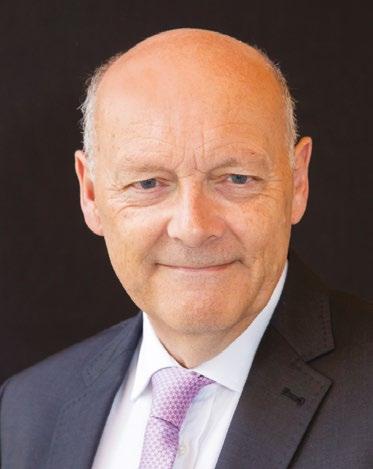
Like other “customer-facing” sectors of our industry, much of our activity was forced to move to remote working.
As with ship suppliers however, we can only provide certain services this way. Whilst the collection and presentation of documents can be undertaken by email, that is only part of our work.
In the light of events, the provision of pastoral care, attending to the humanitarian needs of the crew, has become much more important. Bans on shore leave and repatriations, with crews forced to remain on board long beyond their contracted terms, has significantly increased mental health problems and suicide rates amongst seafarers.
Ensuring the provision of medical care, as well as simply offering a friendly face and a listening ear, are key elements of ship agency, now more important than ever.
Whilst PPE makes seeing the friendly face difficult, we can still listen to and support seafarers in need.
Agents have also been active in the provision of vaccinations, with FONASBA member associations hosting, organising, or co-ordinating centres in their ports.
To support these efforts on the ground, we have also been working closely with other industry associations to ensure that national authorities designate seafarers and shore-based service providers as key workers, albeit with mixed success. We have therefore supported several joint actions in IMO and are signatories to the Neptune Declaration.
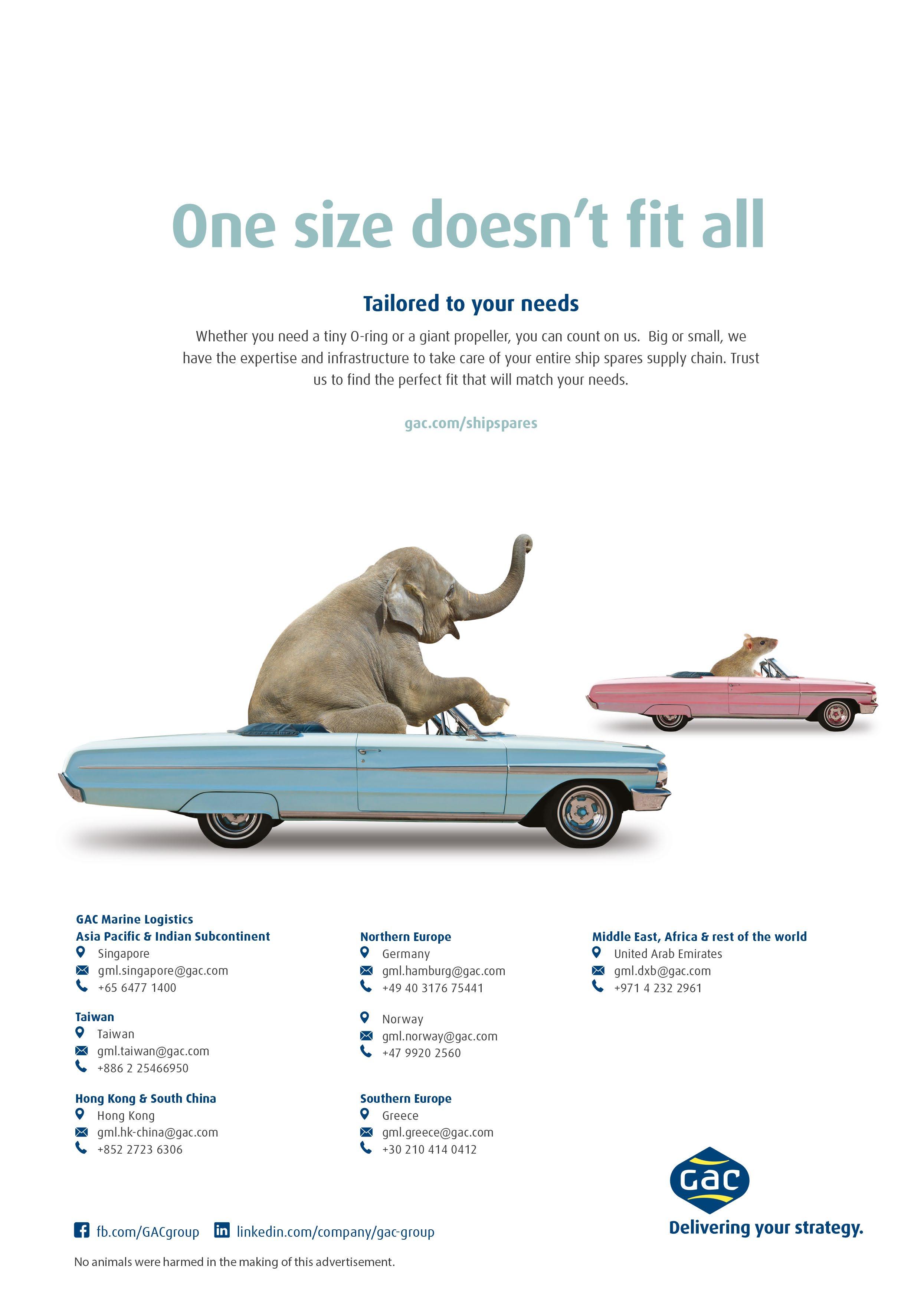
The COVID pandemic has of course accelerated digitalisation and automation and we are keen for this to continue. The more time we can save handling paper, the more we can dedicate to attending vessels and supporting seafarers.
Accordingly, FONASBA co-sponsored with ISSA a paper drafted by the International Association of Ports and Harbours in June 2020 calling for governments, industry, and regulators to work together in ensuring the momentum for change generated by the pandemic is continued into what we hope are happier times.
As key members of the international maritime supply chain, ship agents are not immune from the need to decarbonise our industry and promote sustainable development and must play their part in mitigating climate change.
As we do not ourselves consume large amounts of fuel or energy compared to ship owners and ports, our ability directly to reduce our own carbon footprint is limited.
Whilst looking at strategies to reduce what we do consume, we are also using our position as an information provider and co-ordinator of the port call to guide our principals with just in time arrival information, data on emissions control areas, sources of alternative fuel, waste recycling facilities and similar. Our Sustainable Development Declaration, issued to coincide with COP26 sets out our aims and objectives in this vital policy area.
Ship agents have been coping with change since ships first went to sea. Whilst some of the changes we are now facing
are more complex, and more urgent, than those encountered before, we remain confident that our members will approach them with the same level of commitment, enthusiasm and professionalism as always.
The Federation of National Associations of Ship Brokers & Agents (FONASBA) provides a united voice for the world’s ship brokers and agents. Founded in 1969, the organisation promotes fair and equitable practices and ensures that the needs of its members are understood at international, regional and individual national level across the maritime industry. u



Suppliers and vendors rely on their relationships with ships Agents to get their products on board vessels.
These relationships are key to a successful career in ship supply and are irreplaceable. It can be difficult, however, for those on the supply side to broaden their client base beyond those reached through their agents.
Many husbandry items and services that a ship may need whilst they are in port are better facilitated by an agent. Organising medical support, handling shipments and food supplies need to be co-ordinated by someone who has a holistic overview of the Master, crew and vessel’s requirements.
There are certain circumstances, however, when it is just as convenient for the principal (the operator, charterer or owner) to work directly with the vendor.
The traditional chain of supplier, agent and master/ operator can be looked at differently with the online DA (Disbursements Accounting) Tool created by Greek tech startup, Harbor Lab.
Vendors and agents alike can put their details into the platform free of charge exposing them to shipowners, operators and charterers looking for husbandry services whilst their ship is in port.
Harbor Lab’s CEO and founder Antonis Malaxianakis says: “The software we have developed brings

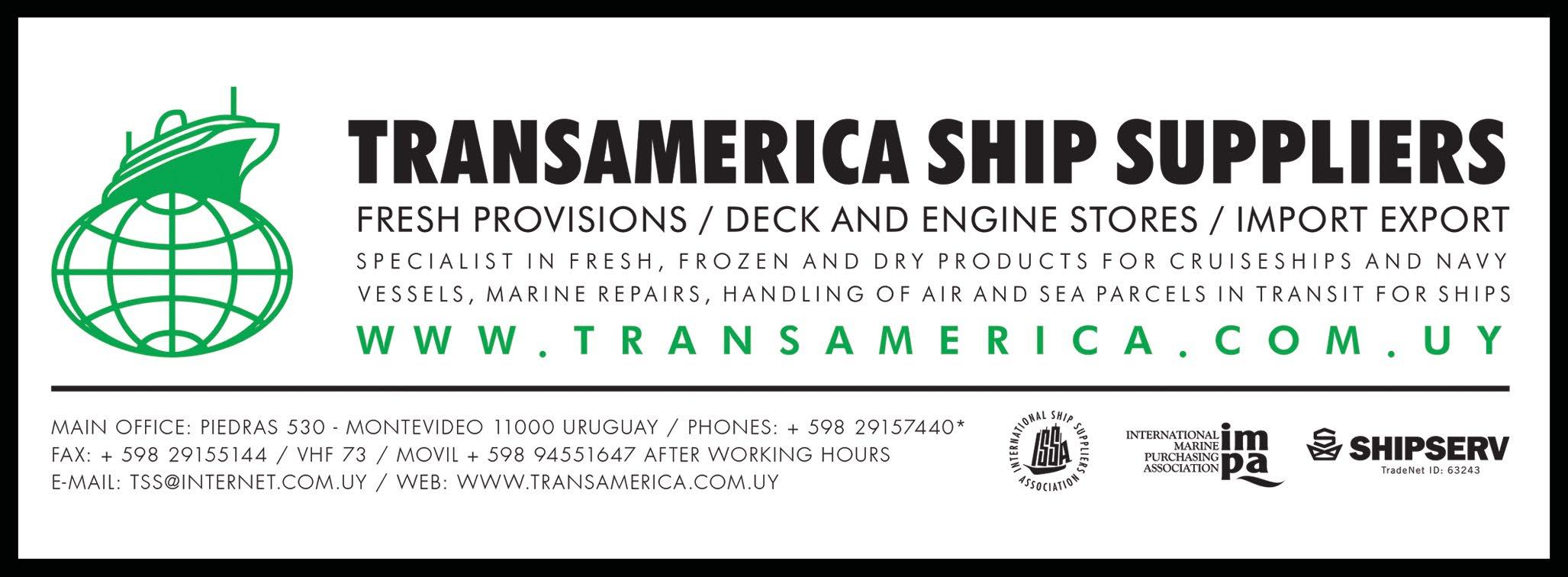

transparency to the principal and supports their decision making at ports that are less familiar to them.
“From the vendor and agent side it creates a level playing field as small companies can present their fees and capabilities alongside larger or more established businesses”.
To date more than 4,000 port calls have been processed using Harbor Lab’s online tool, across the 300 vessels that have brought their DA processes in house and now manage their costs through the system. The platform has already attracted 1200 agents and vendors since it went live in March last year.
Accessing the tool is easy either by desktop or smartphone and all quotation requests from operators
can be viewed in historical order on a personal dashboard.
Principals can reach out to individual companies directly through the tool and request competitive offers for items and make appointments based on these quotations.
Antonis Malaxianakis says: “Crucially, these tools are designed to save ship operators, vendors and port agents time, money and reduce their back-office paperwork as all correspondence and quotes are held in the system.” u





As port congestion continues to plague supply chains, solutions must be implemented on a global scale – but also at the micro level, including in ports themselves says David Yeo, CEO of Innovez One. He explains how smart data can make ports more efficient and capable of adapting to ever-changing circumstances

Supply chains across the world continue to fall victim to a global domino effect, with disruptions in one region resulting in significant delays elsewhere on the planet.
The record levels of congestion on the maritime routes from manufacturing hubs in Asia to the Americas and Europe are having a tangible impact on the economy, with businesses and their customers complaining of delays and shortages.
The ongoing disruptions to global supply chains are also having a major impact on the environment.
Congestion amplified the “rush to wait” phenomenon, which sees ships race across the ocean (burning more fuel exponentially with speed increases) only to queue outside congested ports for days or even weeks, with their engines on.
As a result of congestion, emissions have doubled in the ports of Singapore and Los Angeles during the pandemic, according to a study by Singapore’s Nanyang Technological University.
There is no doubt that solving this global problem will require international co-operation between governments and across the private sector. Meanwhile, action must also take place at the granular level, to improve the efficiency of ports themselves.
When a ship calls at a port, a series of actions must unfold to ensure the right facilities, pilots and tug boats are ready to welcome it.
Organising each of these services to meet the specific needs of each vessel is a complex puzzle on its own, and the slightest mistake in planning may result in vessels having to wait for services for hours, which further exacerbates congestion.
Unfortunately, despite the importance and complexity of this process, it is still managed manually through whiteboards and spreadsheets in most small and medium ports – which inevitably leads to inefficiencies.
A key change that must happen is to digitalise tug, pilot and service vessel operations.
AI-powered algorithms can optimise planning and ensure people and assets are in the right place, at the right time.
Most importantly, these digital solutions can reallocate resources instantly if a vessel’s ETA changes, which makes an immediate and tangible difference for ports and their customers.
This is the case in the Indonesian port of Tanjung Priok, where average waiting times for nautical services dropped from 2.4 hours to around 30.5 minutes.
This might feel like a drop in the ocean, but these transformations at the local level can have a global impact, by making individual ports and the entire chain more resilient and capable to adapt quickly in response to disruption.
It is also the first step towards building an integrated network of smart ports, where information flows more effectively along supply chains. The adage “think globally, act locally” also applies to fighting port congestion. u

Ship owners and operators are increasingly turning to conditionbased monitoring (CBM) in order to reduce maintenance needs –which leads to lower costs
Marine operators are under constant pressure to run their operations as profitably as they can.
As well as addressing traditional issues – such as maintaining crew safety – fleet operators must follow increasingly stringent and costly environmental regulations.
At the same time, they must keep onboard machinery – and the ship itself – running smoothly.
A key factor here is to keep maintenance costs to a minimum, but without compromising performance. Every conceivable type of onboard auxiliary equipment – be it centrifuges or compressors, motors or fans, gearboxes or pumps – needs to be working with optimum performance.
Maximum ship uptime requires onboard machinery to perform reliably in operation – and not fail. Under typical seagoing conditions, it is vital to assess the condition of auxiliary machinery without having to disassemble it.
Efficient monitoring of machinery – allowing fast identification of potential problems – is critical for smooth, profitable operation of any vessel. For specialised vessels such as fuel tankers – which are particularly vulnerable to spiralling maintenance costs – it is even more important.
The traditional approach of fixing problems as they arise cannot be applied to modern vessels. Too often, this will lead to unscheduled downtime – as parts wear down and cause catastrophic failure.
The remoteness of a sea-going vessel means that fixing a problem is far more complicated and expensive than it is for any land-based machine. This is one of many reasons why marine operators are increasingly using onboard condition-based monitoring (CBM) to maintain performance.
CBM gives instant access to machine data in order to identify potential problems at an early stage. It helps to avoid serious part failure – and raises the performance
of any vessel. It can be applied to single ship or an entire fleet, allowing managers to track performance across vessels wherever they are located.
Data can be collected in a variety of ways. In the simplest case, it can be gathered via handheld devices – perhaps focusing on the most critical machinery. At the other end of the scale, information can be collected automatically from every machine onboard. Information can be analysed onboard ship or – more commonly – transmitted to an onshore ‘hub’ for more detailed analysis.
Traditionally, a ship used in the oil and gas industry comes into dry dock every 2.5 years for a complete overhaul of onboard machinery. (The period is every five years for merchant ships.)
By keeping a constant watch on machinery health, CBM could delay the need for major overhauls. This would mean putting a ship through fewer major maintenance operations over its lifetime. In addition, planned repairs can be carried out with more confidence.

understand, colour-coded result. It gives a fast analysis of an asset’s condition, allowing staff to decide whether it needs to be repaired – or the data sent to SKF for further analysis.
A variation on the basic kit is one that incorporates a routebased solution. The main difference is that it provides regular data – allowing a developing fault to be tracked, in order to optimise predictive maintenance.
The route-based solution includes SKF Enlight software, which allows connectivity to SKF’s remote diagnostic service. The software has a simple interface. A single web log-in is needed, and live data analysis is possible.
SKF’s remote diagnostic experts can access and analyse data and propose maintenance recommendations. Results of the analysis are presented on the SKF Enlight dashboard, and is immediately transferred into individual tasks for the crew.
One issue that has particular relevance in the marine industry – but not in, say, a factory setting – is that of bandwidth. To be more precise, the lack of bandwidth.
A critical part of CBM is in-depth analysis. Once machine data has been gathered, it is typically transmitted to the cloud, allowing an expert to analyse it further. This is not a problem on land, as there is almost no limit on how much data can be uploaded. However, it is not so easy when data is generated offshore. Transmitting information – such as large data sets from onboard machinery – will take much longer from onboard ship, due to the limited speed of satellite communications. For this reason, the process needs to be done slightly differently.
On ship, data tends to be collected – and then later sent for analysis onshore. However, it is not really practical to send such enormous amounts. For this reason, it must first be analysed and filtered – before sending only the most relevant data for onshore analysis.
In addition, many other types of shipboard data tend to take priority over maintenance and operations data. This is why a smart filtering system is needed, so that the most relevant machine data is prioritised.
As well as handling onboard maintenance data, CBM is increasingly moving into performance monitoring. This is because fleet operators must increasingly collect many other types of information, such as fuel consumption and emission levels.
SKF offers an emission monitoring system called BlueMon that records everything in one place. It links to GPS position
data, which helps compliance with MARPOL regulations. If a ship is approaching an area with higher emission standards, for instance, the bridge can be alerted – allowing emission levels to be re-checked in advance.
This and similar systems effectively fill in a ship’s logbook automatically. This type of operation is likely to become more common in future. Using this kind of technology across a fleet would allow the owner to benchmark its environmental performance against existing industry standards.
With SKF displaying its wares in detail, ship suppliers are clever enough to spot a lucrative business model supplying the resulting spares needed to keep on-board assets in top condition. A tri-partite partnership could develop between the vessel(s), the ship supplier and SKF – of great benefit to all concerned.
The days of waiting for machinery to fail before fixing it are long over. Onboard ship, the difficulty and expense of breakdowns means that operators do their utmost to avoid them. Fleet operators can better balance various priorities – such as maximising profitability while adhering to strict environmental guidelines – through the intelligent use of CBM. u



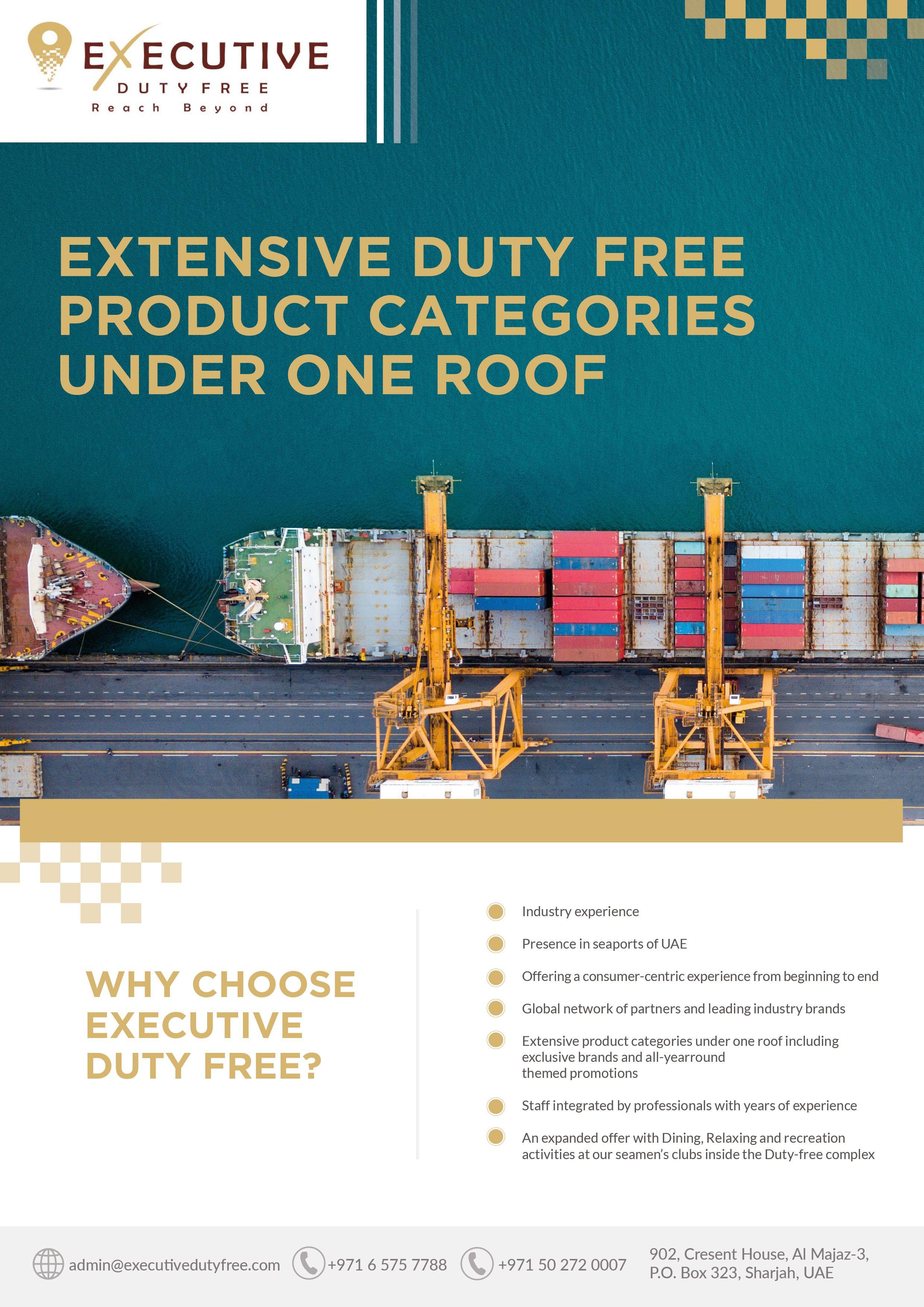


They say you should never expect anyone to do something if you are not prepared to demonstrate it yourself.
One man who has embraced that philosophy completely is the Chief Executive Officer of Compass Supply Solutions, Frank René Welkerling.
As one does these days, I dialled him up on-line to find out how this global supplier and significant presence in the maritime sector had fared in recent times.
The answer? Extremely well by the sound of things.
Relaxing in his new and very stylish open plan office Frank clearly leads from the front.
A vivid example of this was his story of the 10,000 eggs that were needed on a major cruise ship but which, somehow, had been missed by a number of suppliers.
Gleefully Frank told me he found the eggs in 24h and leapt into one of the Compass trucks himself and merrily drove down to the ship and made the delivery.
Frank is an Ex Executive Chef of Cunard Line and his heart is with Cruise Lines and the Global Travel Retail business.
Result? Well, let’s just say the customer was very pleased and much more than eggs flowed from the Compass warehouse as a direct result of Frank’s initiative and enthusiasm.
“It’s all about Quality & Service,” he commented. “Quality of service is just as important as quality of product. The dedication, passion, and disposition to serve as a good service provider you have to have in your genes.
“These days we find customers are more than prepared to pay that little bit extra for a quality product and if you match that with unparalleled customer service and attention to their needs then success in your business is guaranteed” If you go every day 24/7/365 the extra mile for your clients”
Compass bestride the cruise industry and list all the major players as customers.
They all seem to like Frank’s corporate style. For example, Disney, that quintessential American icon, loves to stock
UK made products in its onboard shops –supplied and offered by Compass.
Other titans like the World leaders in soft drinks - with whom a close relationship exists - have substantial supply contracts with the company for Global Travel Retail business.
A major part of the business is the creation and packing of bespoke very nice gift boxes which prove very popular with a variety of corporate clients from all continents during the whole year. Contents include miniatures of top drinks brands and much more.
It’s not all maritime focused.
The World leading Supermarket brand with also a branch in Australia ordered crackers, various Christmas Calendar and the total supplied sold out in the shops in one day. Clearly Frank’s skill at what to stock and supply pays dividends away from the sea.
With a positive eye on the future Frank relates how he used the quieter time of the pandemic lock-down to acquire brand new premises which is already HMRC approved and 5400 pallet locations well prepared for huge growing.
Handily situated just off the M27 motorway at Fareham, in Hampshire, UK, Compass’ premises extends to a total area of 65,000 sq. m of offices, warehouses, bonded stores and associated grounds.
Virtually all his staff of 36 have returned to the site once restrictions were lifted by the British Government and the furlough support scheme came to an end.
Although the volume of stores supplied to vessels was vastly reduced during the more stringent of the lockdown periods, Frank confirmed that with 24 cruise ships at anchor there was still a need to supply the 80 to 100 lay-up personnel remaining on board each one. Compass continued that supply role throughout.
One of several changes in what customers are asking for is products containing considerably less sugar and environment friendly products. With 20 brands of mixers in stock several serve that – what one might call – emerging market for healthier options all round.



There is an air of adventure amongst the company’s customers. Frank told me that he is in touch with around 100 small distilleries, for example, throughout UK, Ireland and offering a change – sometimes a radical one – from the big brands of gin, whisky and other staples.
Frank confirmed that craft spirits are selling very well with craft gin and rum a leader.
A significant number of containers of snacks, crisps etc. leave the company’s slick fulfilment centre every month destined for eager customers world-wide to Compass Supply Solutions Travel Retail clients.
The trend for experimentation and adventure extends to chocolate where local, handmade offerings are proving to be ever more popular.
“Quality with inspiration is definitely the trend,” commented Frank – and he is delighted to supply
Because the variety of products in the UK is inexhaustible when it comes to creative, history, very good, innovative, and new products.
Not just chocolate and all kind of confectionery. Tea and Coffee, FMCG goods – the demise of which has often been reported – is another strong seller enjoyed by Compass’ global audience.
So, I asked Frank who else he supplies.
“I’m delighted to tell you of our new customer a huge Ferry line in UK and Ireland. We also continue to supply the UN, military PX shops, airport Duty Free & cross border shops throughout Europe as well as the diplomatic market Global.
“The spread of our Global Travel Retail markets and their diversity gives us security.”
Frank proudly told me that half his staff are women and the skills and attitude they bring to the business are very important and exemplary for the men in the team “A good balance is the recipe for our success”. All the staff were praised by Frank, and it was clear during our meeting that he is very appreciative of his staff and their loyalty and enthusiasm.
Drawing our meeting to a close I asked him to encapsulate the corporate ethos of Compass Supply Solutions.
“Quality and Service” he said quick as a flash. “That is what underpins our good UK company.”
From my brief introduction to the sophisticated operation that is Compass it is clear this ethos has helped him significantly to survive the trying economic times of the pandemic and face the future secure in the knowledge their business model works. u

ISSA members are often asked by their customers to receive, store and deliver third party goods to vessels.
This is, of course, work that historically would have been undertaken by ship’s agents or freight forwarders.
Ship chandlers are, however, often very well placed to undertake such tasks and may be seen by shipowners as a more efficient option (efficiencies in both operation and cost).
It is quite likely that ISSA members will charge much less than an agent or a freight forwarder for the same task and can efficiently combine the delivery with their own stores, reducing the costs of the “last mile”.
All of this means that there is a developing trend for ISSA members to take on such tasks with increasing frequency, and not simply on an ad hoc basis but as a core part of the service that they provide.
It is important to recognize the risks that arise out of these activities, and to consider whether those risks are correctly managed and insured.

When you accept the task of receiving, storing and delivering goods (and possibly the task of arranging customs clearance) you do so as a professional, and are expected to discharge your duties with due “skill and care”.
The precise formulation of your obligation will depend upon the law of the contract and/or the law of the country in which you reside. However, in all cases you will be required to act professionally, and you may be liable for losses that arise from a failure to do so.
This will include the risks that the goods may be lost or damaged whilst in your care, or the risk of losses from a failure to deliver as instructed (ie. you are late and miss the vessel, or cause a delay in the vessel’s departure).
If you take on the role of Customs clearance but make an error that causes the goods to be seized, delayed or additional import duties or taxes imposed then a claim may be made against you.
It is highly unlikely that the insurance arrangements that you may have in place for your traditional work as a ship chandler will also cover you for the risks that arise when you handle third party goods.
It is important to discuss this with your insurance broker and identify where you may have gaps in your insurance coverage.
ISSA’s Conditions of Sale were updated, to include some important provisions that will serve to offer some protections and limits to your liability when undertaking such tasks.
You should review the ISSA Conditions of Sale and consider whether they are adequate for the activities that you undertake.
ISSA members who do not have their own “T&Cs” should ensure that they contract on the basis of the ISSA Conditions of Sale.
To do so, it is ESSENTIAL that your customers are told, when the contract is formed, that the ISSA Conditions of Sale will apply. The easiest way to do this is to ensure that on every QUOTATION and on every E-MAIL issued by your company that you state clearly:
All business and contracts undertaken or entered into by us are subject to the ISSA Conditions of Sale, available at https:// shipsupply.org/services/conditions-of-sale/.
It would be good practice to make a similar reference on your invoice and delivery notes.
The protection afforded by the ISSA Conditions extends beyond the handling of third party goods and provide many important provisions including those that will assist in cases of delayed or evaded payment.
This column has repeatedly stressed their importance, and will continue to do so. u
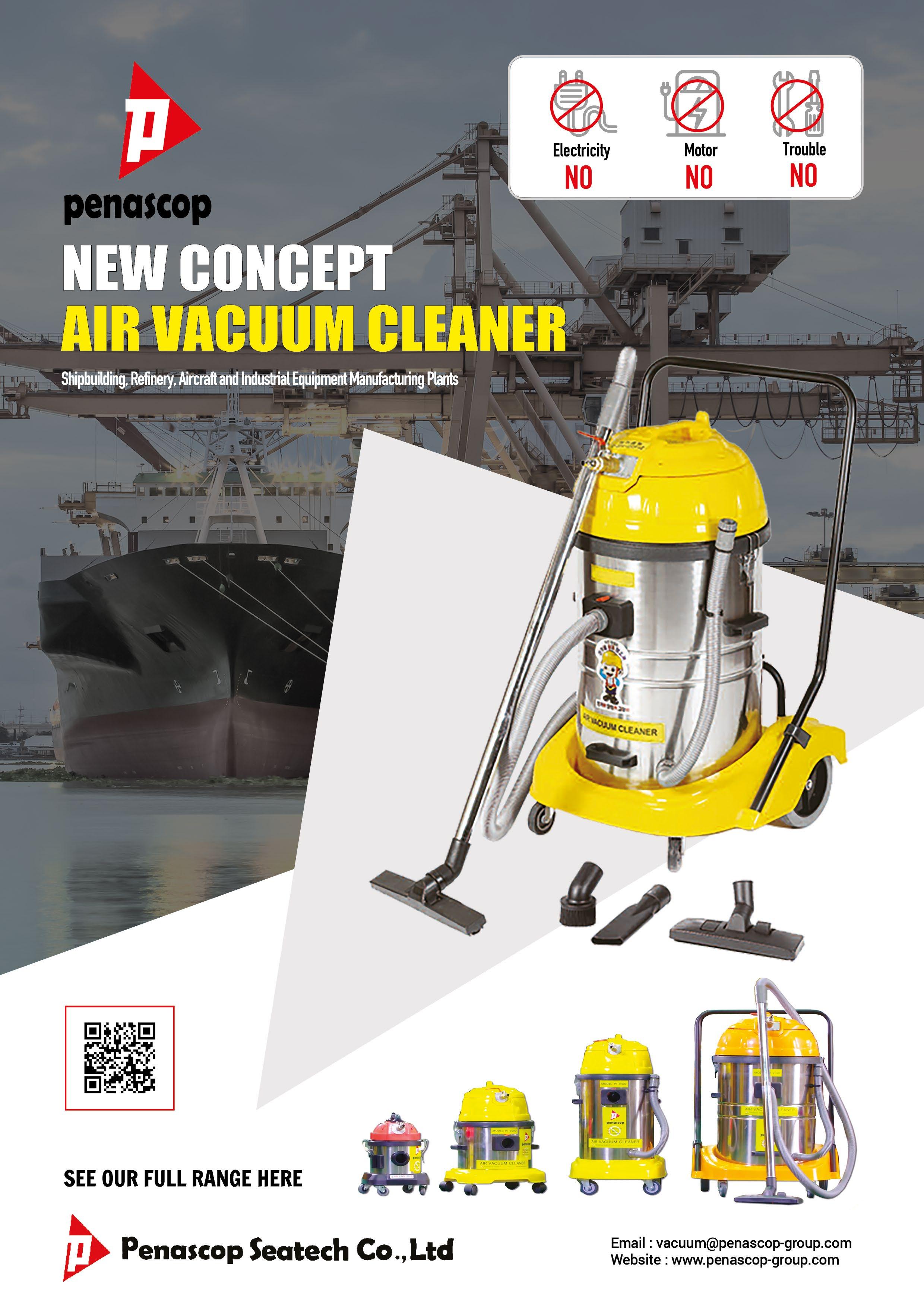

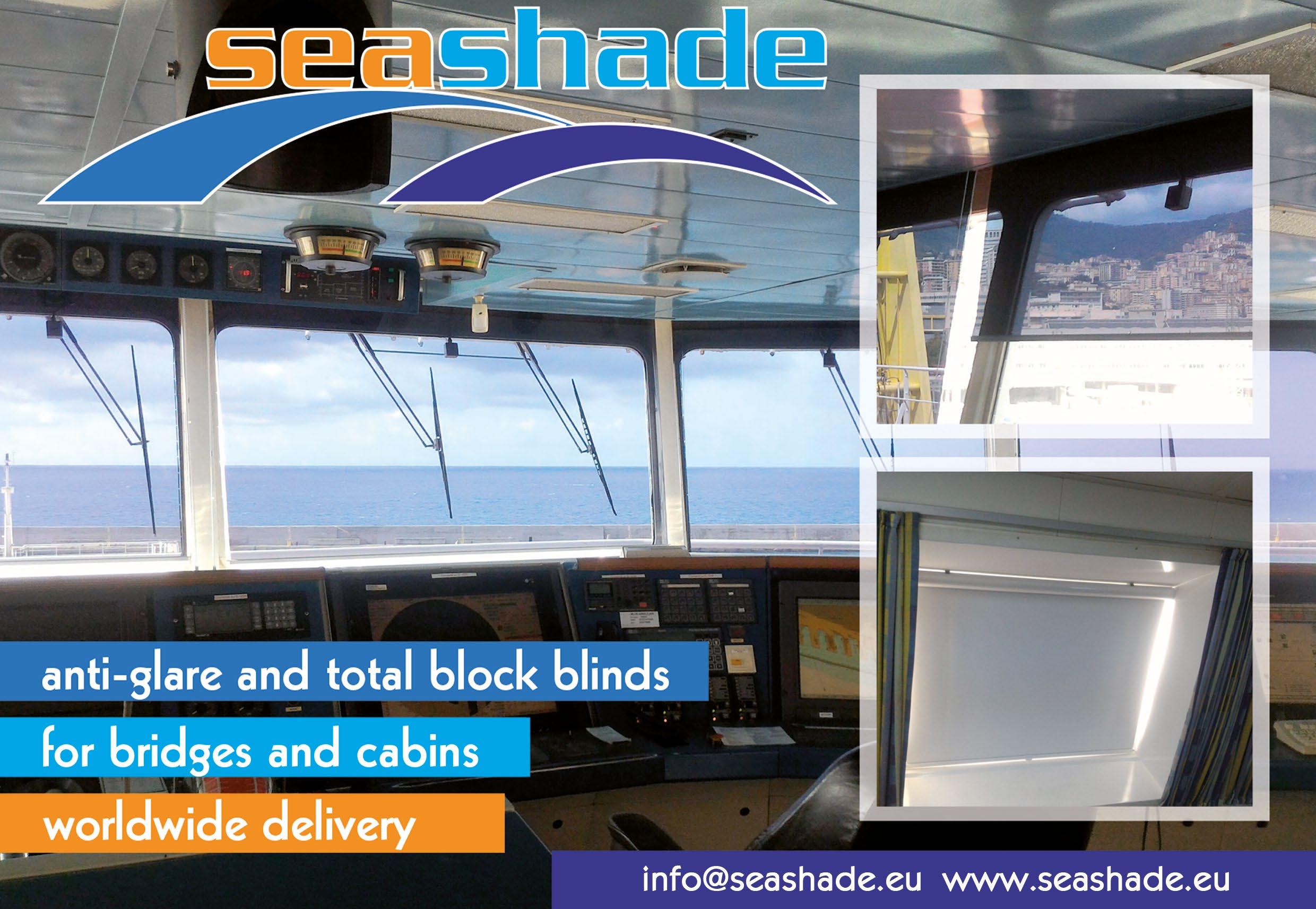
In the last issue of The Ship Supplier, I wrote about two major sectors of the shipping industry doing very well, as the world breathed again after easing of the COVID pandemic. Their markets have now peaked, in part due to uncertainty caused by the newly discovered Omicron variant of coronavirus. We wait to see the full effect of this new variant upon the global economy. Its full effects are not yet known but it will not be the final variant. The virus and its consequences will be with us for the foreseeable future.
Whilst the container ship and bulk carrier markets enjoyed a good year in 2021, the same cannot be said for tanker owners and operators. Received wisdom was that their time will come, most likely in 2022, as the world recovers further and its need for oil grows. That now looks more doubtful.
Firstly, in the face of continued limited demand, oil producing nations are restricting their outputs to stop prices collapsing. There is less oil to be shipped. Onshore stocks of oil are good and pipelines are increasingly used to transport oil across national boundaries.
Secondly, there are ongoing United States sanctions against two major oil exporting countries, Iran and Venezuela. Tanker owners transporting cargoes from those countries risk losing their vessels’ registration and insurance and having their bank accounts frozen. Consequently, most owners will not carry the cargoes, limiting the employment opportunities for their vessels.
There was much speculation that US President Biden would be softer in his approach to Iran, than his predecessor, President Trump, had been. The expectation was that sanctions against that country would be lifted. That has not happened, and a “cat-and-mouse” game continues as both sanctioned countries export oil by convoluted means.
These include the transhipment of cargoes off Africa and in the Caribbean and Far East, the use of AIS “spoofing” (when one vessel pretends to be another) and the use of front and thirdparty companies in numerous other countries. Ship suppliers believing themselves geographically distant from these trades would be mistaken.
Finally, tankers have an image problem. Whereas once being “green” was seen as a niche interest, the opposite is now true. Everyone wants to be green and for many being “anti-oil” is part of that package. Ask most people what they know about tankers and the names, Torrey Canyon, Exxon Valdez and Wakashio will probably be foremost in their minds.
Whilst it is easy for companies with “Petroleum” in
their names to replace it with “Energy”, it is harder to change what they actually do.
Nevertheless, the political pressure to do so is fast escalating, as demonstrated during the recent COP26 conference in Glasgow. This was followed in November by a disappointing IMO Marine Environment Protection Committee (MEPC) meeting, at which member governments failed to commit to net-zero greenhouse gas emissions (GHG) from shipping by 2050.
Although this lack of collective international maritime resolve harms all sectors of the shipping industry, it will most keenly impact tankers, since they are strongly associated with the out-of-favour oil and chemical industries. Mainstream banks and investors will increasingly look to place their money elsewhere.
In summary, Ship suppliers must remain vigilant as 2022 will see some tanker companies close down and others taken over by rivals. u
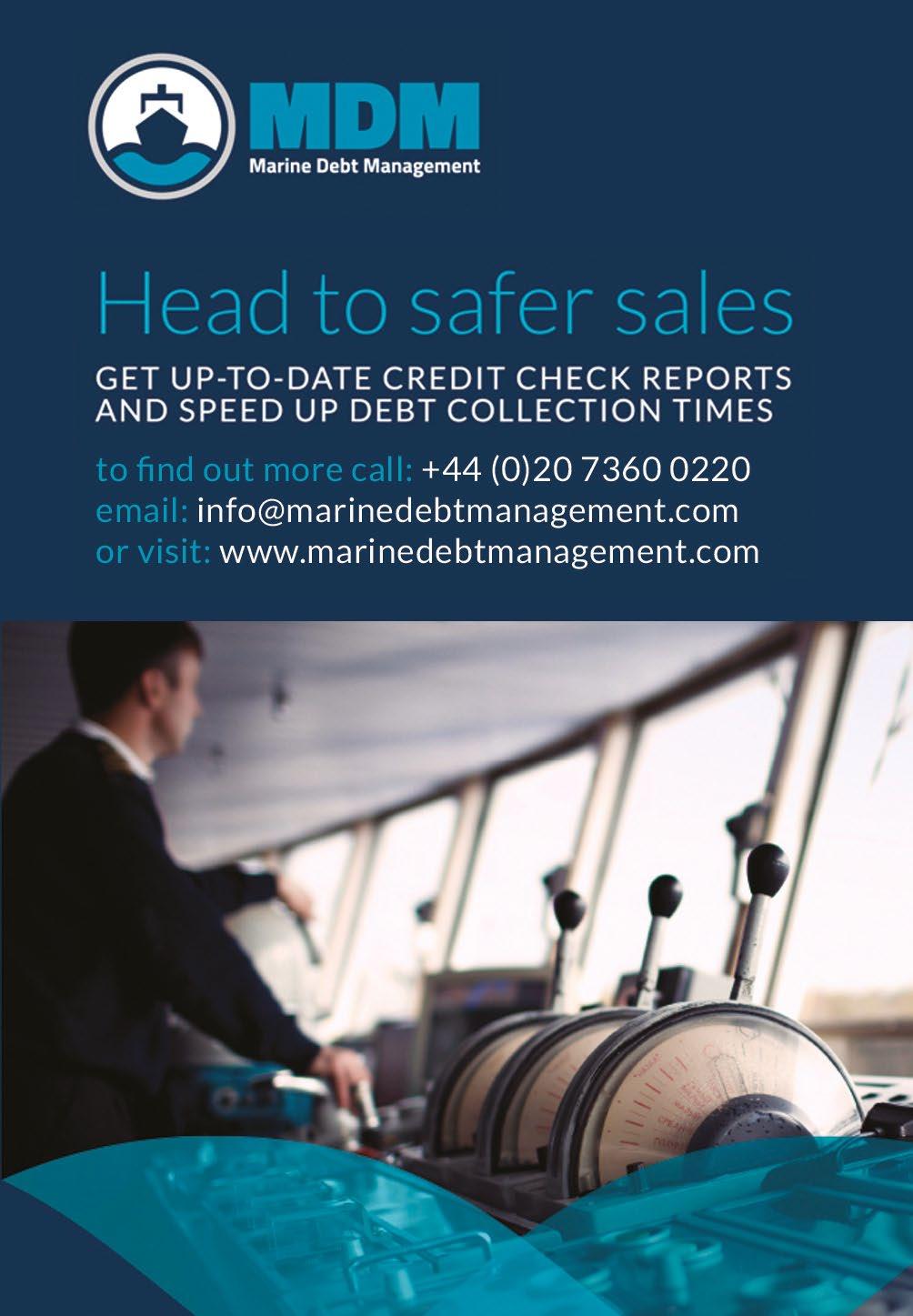

Like everyone else ISSA embraces the need to do everything it can to tackle climate change and prevent harm to the maritime environment. A new Report by the Group of Experts on the Scientific Aspects of Marine Environmental Protection (GESAMP), shines a light on a pertinent subject
GESAMP is an advisory body to the United Nations sponsored by ten UN entities including IMO*.
The report, which can be downloaded here, outlines the various sources of marine litter and the impact and assesses the current availability of data and identifies knowledge gaps for the main categories of sea-based sources of marine plastic litter.
The Working Group was established by GESAMP, on the request of IMO, Food and Agriculture Organization (FAO), and United Nations Environment Programme (UNEP).
The report stresses the urgent need to reduce marine litter. It outlines a number of ongoing initiatives and suggested steps to combat this issue, providing readers with practical information.
It also highlights knowledge gaps and suggested areas for future academic and scientific research, including on the impact of COVID-19 on ocean industries and livelihoods that result in marine litter.
Although very little quantification of sea-based sources of marine litter exists in the scientific, peer-reviewed and grey literature (highlighted as an area for further research), the report looks at five main categories.
• Fishing: Abandoned, lost, or otherwise discarded fishing gear (ALDFG) from artisanal, commercial and recreational fishing operations is a large source of marine litter. It can include surrounding nets, seine nets, trawls, dredges, lift nets, falling gear, gillnets and entangling nets, ropes, traps, hooks and lines, floats and buoys, sinkers and anchors and miscellaneous gear including metallic materials. This gear can be lost regularly, episodically or catastrophically for a number of reasons ranging from inclement weather, ordinary wear and tear, wildlife interactions to natural occurring and human-made underwater obstructions. The impact of ALDFG includes economic losses, reduction of ability to target specific marine life, marine wildlife entanglement in and ingestion of marine litter, damage to marine habitats, impact on human habitats such as beaches and coastal areas and also loss of human life due to debris entanglement.
• Aquaculture: Ocean and coastal farming can be a source of marine litter in the form of aquaculture equipment and plastics, including ropes, buoys, mesh bags, anti-predator



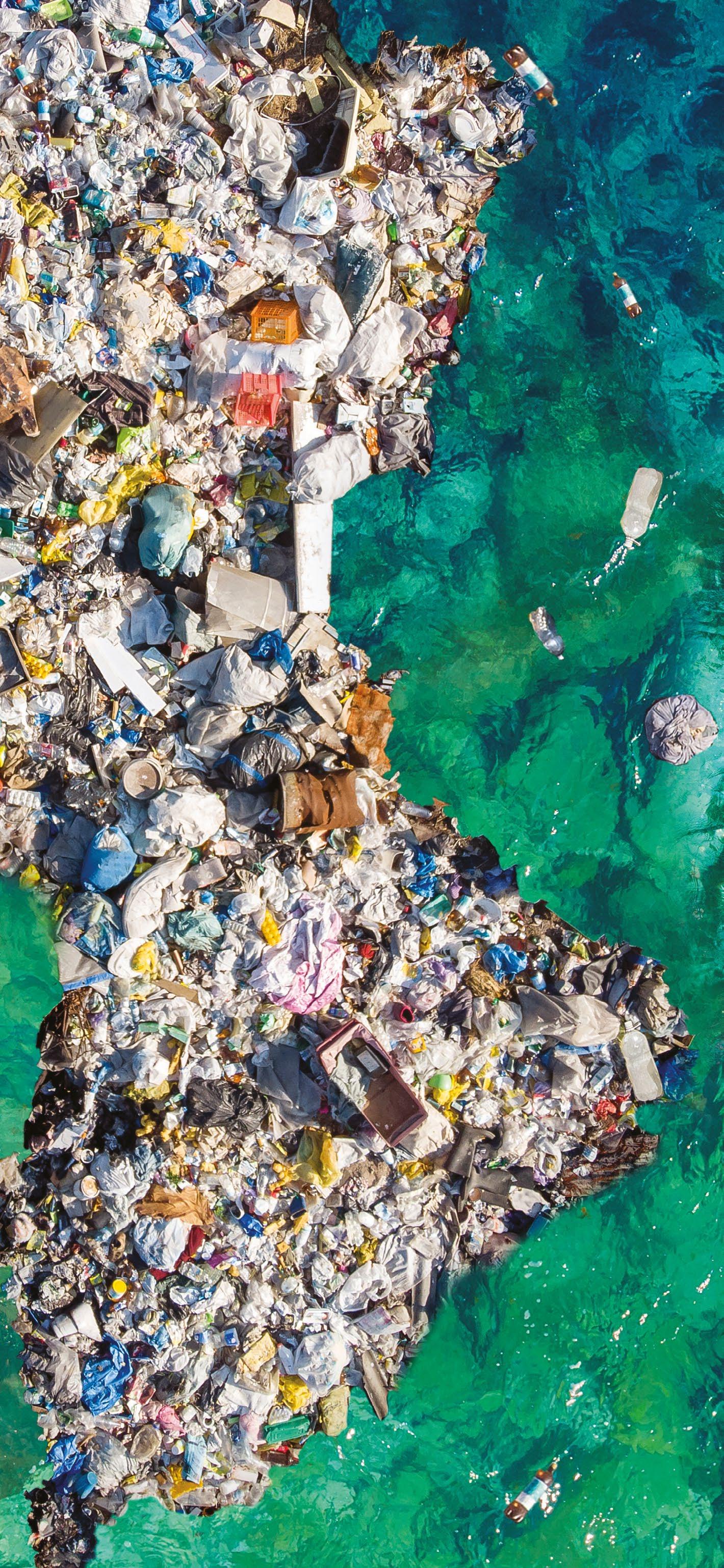
netting, cages, tanks, etc. This equipment may be damaged or discarded leading to marine litter which is often concentrated in coastal areas where aquaculture is practiced. Expanded polystyrene is the leading form of marine litter from ocean and coastal aquaculture activities, but there are currently no global estimates for the amounts of marine plastic litter generated from this sector.
• Shipping and Boating: Marine litter from merchant ships, cruise ships, yachts and leisure craft can take the form of solid waste, waste from cargo holds (e.g. wire straps, packaging materials, plastic sheets, boxes etc.), waste generated during the normal operations of the ships, personal litter from individuals onboard, debris from vessel wear and tear, and sewage (although this is regulated by IMO’s MARPOL treaty, accidental discharges occur occasionally). Microplastics from shipping and boating are also highlighted in the report as are shipwrecks, lost containers and cargo. In addition to impacting marine life, affecting coastal areas and potentially damaging other ships, litter from shipping and boating can also damage coastal and ocean-based aquaculture. The report highlights that few detailed studies are available that quantify the amounts and types of marine litter from shipping, and that further work is needed to address knowledge gaps in terms of mapping and modelling of ship generated litter sources and distributions, microplastics in ship surface coatings, as well as socio economic impacts of marine plastic litter generated from this sector.
• Dumping of waste and other matter at sea: this category includes dredged materials, which is by far the most significant in terms of volumes, and potentially the largest source of plastic or other litter from wastes dumped at sea. However, there is limited information on the quantities of plastics in the waste streams, despite efforts by the London Convention and London Protocol Parties, the treaties that regulate the prevention of pollution from dumping of wastes at sea. Therefore there is a need for a better understanding of the presence of plastics in wastes dumped at sea, both in terms of the characterization of the plastics present as well as the geographical distribution.

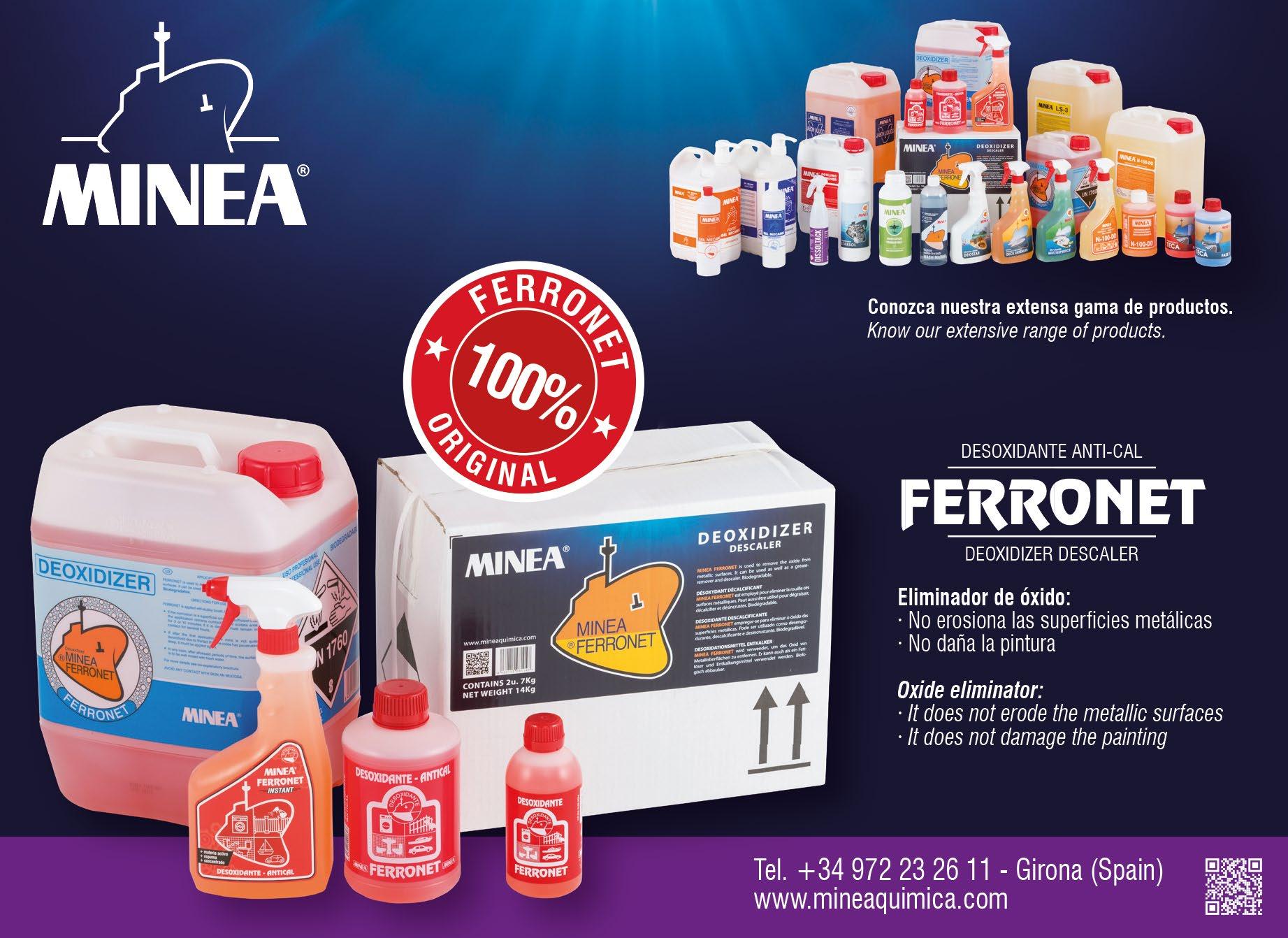
• Other ocean uses: marine litter can occur as a result of offshore oil and gas exploration; shark and “stinger” nets set up in beach areas to prevent harm to humans; weather monitoring, which can create debris, such as weather balloon equipment including acidic batteries, plastic components and latex rubber; artificial reefs, which may be constructed out of waste materials such as old tyres, etc and may be impacted by tidal and weather conditions; scientific research equipment and activities; and fireworks.
The report concludes that sea-based activities do contribute to the global burden of marine litter, and that this does warrant concern.
However, it is not possible to estimate the total contribution of sea-based sources and a concerted effort to update global estimates is needed to fill these knowledge gaps, together with renewed efforts to reduce inputs of marine litter from all sources.
It is of note that this report does not examine the potential toxic effects of plastics on marine life, as this and other subjects are covered in detail in the reports produced by GESAMP Working Group 40 on Sources, Fate and Effects of Microplastics in the Marine Environment, see in particular its second report (GESAMP Reports and Studies No. 93, published in 2016.

*GESAMP is made up of scientific experts from IMO, FAO, Intergovernmental Oceanographic Commission of UNESCO (IOC-UNESCO), United Nations Industrial Development Organization (UNIDO), World Meteorological Organization (WMO), International Atomic Energy Agency (IAEA), United Nations (UN), UNEP, United Nations Development Programme (UNDP), and the International Seabed Authority (ISA). u
 Green ISSA
Green ISSA
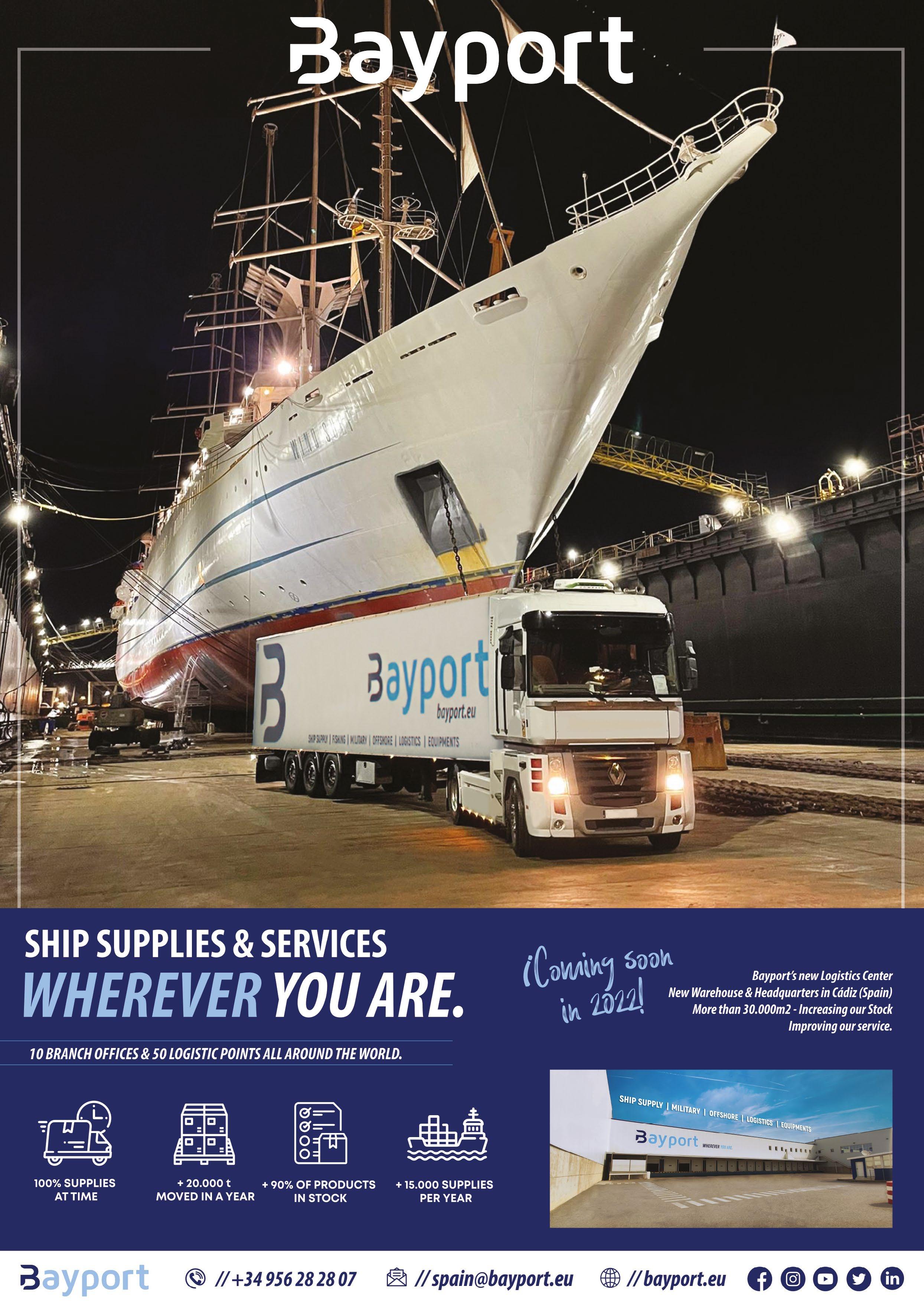
UCC will be taken to the next level, OCEAN hears
The EU Union Customs Code and, in particular, the importance of Articles 269 and 270 came under interesting focus at November’s OCEAN Board Meeting with a presentation by Dominik Schnichels, Director of Customs at DG TAXUD.
He told the OCEAN Board Meeting in Brussels that according to Commission President von der Leyen, it was time to take the Customs Union to the next level, “equipping it with a suitable framework that will allow us to better protect our citizens and our single market.” It wanted to propose “an integrated European approach to reinforce customs risk management and support effective controls of the Member States.”
Delegates to the Brussels meeting, held in-person for the first time since the pandemic, were told that there is an on-going evaluation of the Union Customs Code, which is a pre-condition for any revision.
Then there is the Foresight Project which was computed last year. The report is a long-term vision of how Customs should look like in 2040, the Customs Action Plan of September of last year, and then the recently launched Wise Persons Group which would also look into the more short- and medium-term proposals for the revision of the Union Customs Code.
Thanking the Director for his presentation, OCEAN Chair Wolfgang Sump asked what were the requirements to make amendment in the Article 269 and Article 270 and for them to come a bit closer to the reality of the ship supply sector.
He also asked what the likely timeline was for amendment of the UCC?
Mr Schnichels said that if all went well, the EU Commission Proposal would be published in December 2022. Files move out of the hands of the Commission, he said, as it is a co-decision file with the Council and the Parliament.

Mr Dominik Schnichels, Director of Customs at DG TAXUD (left) with OCEAN Chairman
Mr Wolfgang Sump (centre) and Mr Karsten Maier, Secretary General of OCEAN
The Director then gave his wish as well as his realistic expectation of the timeline; his wish being that they have a rapid reading in the European Parliament and then the Council does the same.
If that was the case it could be completed by September 2023. Being realistic, and if there were delays in the procedure and it rolled over to January 2024, he said the discussion in Parliament could come to a halt, resuming after the summer break.
Other topics could be taken up with the EU political process in 2024, namely appointing new or re-appointing Commissioners; so realistically 2025 was more of an accurate timescale, he stressed.
Arne Mielken, Senior Policy Advisor at OCEAN’s Brussels Secretariat, raised the issue of Article 270 and asked the Director to explain how realistic it really was to change Article 270 with something that would reflect the reality on the ground a little better.
Mr Schnichels said he could only reiterate what was discussed at the meeting in August 2021, that it was important that DG TAXUD was aware of the point, but this is a revision of the Union Customs Code which has to go through the co-decision procedure.
Mr Mielken asked what OCEAN needed to provide or do now as it had already responded to the public consultation and submitted its first ideas. He said OCEAN was very happy to meet the Director in the future should the need arise to discuss and define the wording of the submission.
Mr Schnichels said he believed that what had already been done was the right thing, but OCEAN could continue to submit examples of issues to ensure attention is focused on the problem, the real-life issues. u

LLC “Baltmorservice” provides ship chandler services in the ports of Russia /Kaliningrad and the region, Tuapse, Vladivostok.
We also offer our services in the ports of Poland (Gdansk, Gdynia). In the indicated ports, we supply sea vessels with foodstuffs, goods of the economic group, office supplies, technical equipment, consumables, etc.
We offer transparent prices and impeccable quality 24 hours a day, 7 days a week, 365 days a year.
We supply everything you need – from food to consumables. Everything that you need here and now, as well as what the crew may need on the next voyage, we are ready to deliver as soon as possible at reasonable prices.
The prices for supplying ships are very affordable. Due to the fact that any orders: equipment, machinery, foodstuffs, spare parts, measuring instruments and other products, will be fulfilled without the involvement of third parties, the total cost of your delivery will be lower.
It is also possible to save money on the complex supply of your vessel.
ISSA warmly welcomes Baltmorservice to Associate Membership. u

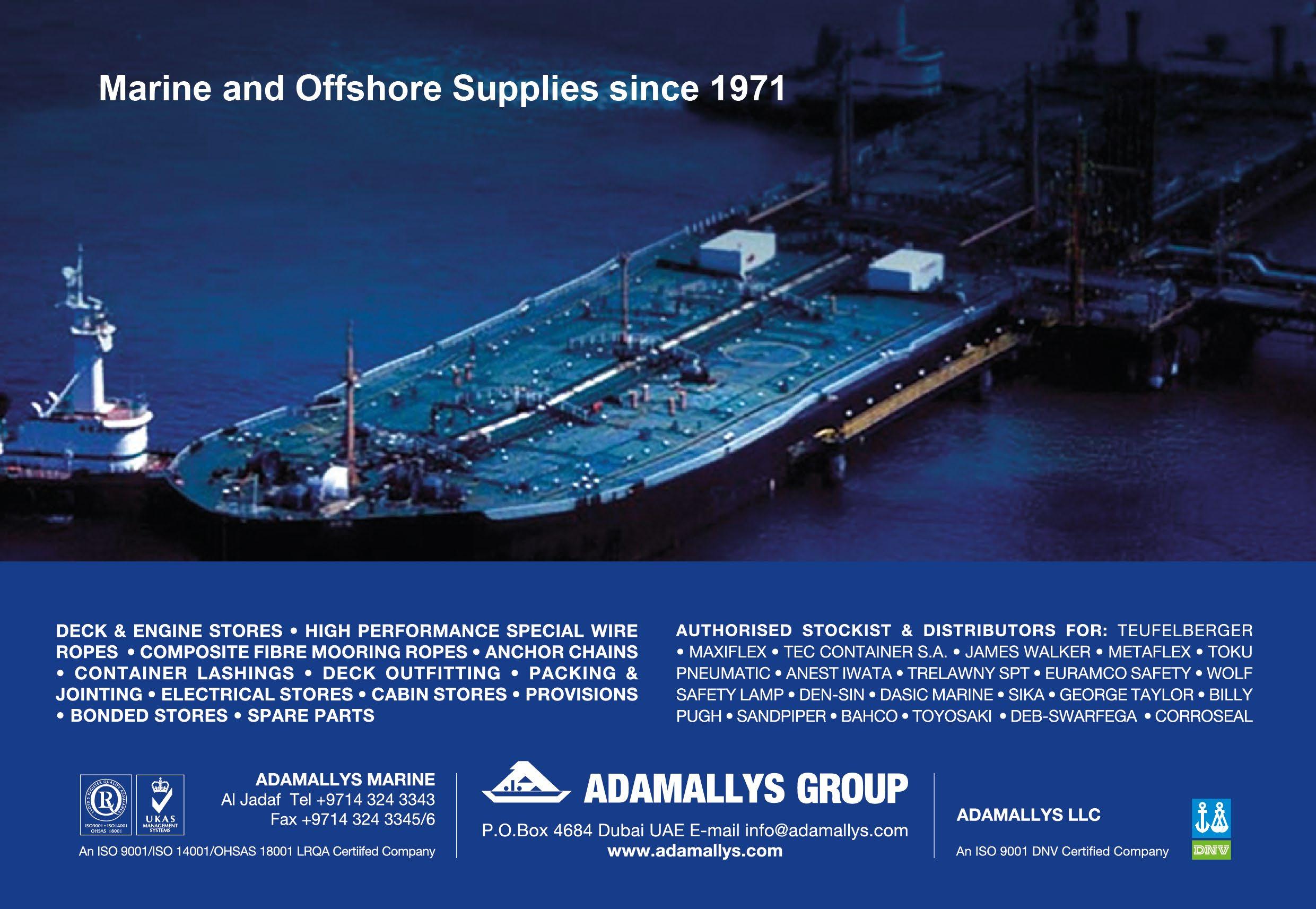
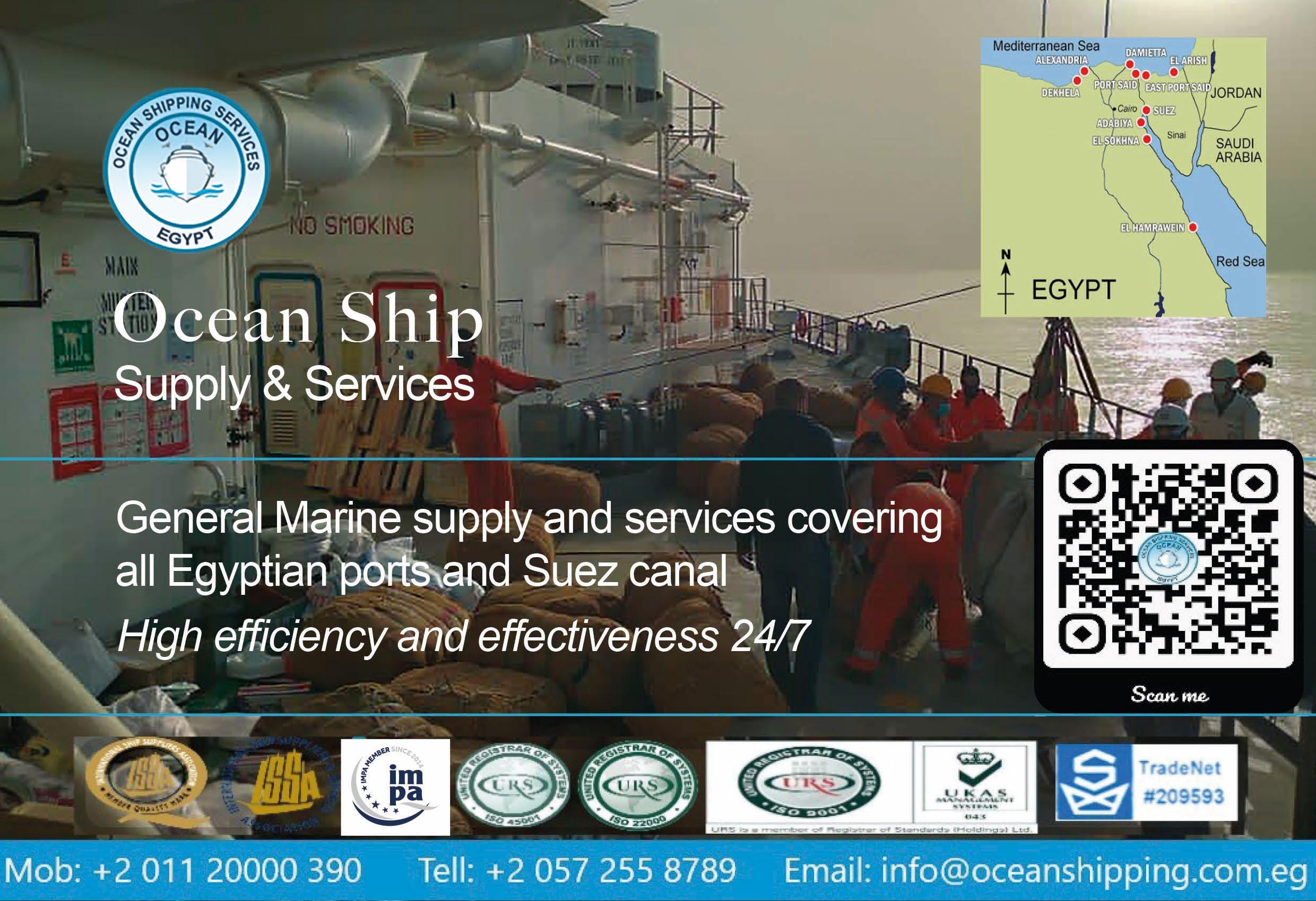


With 15 nominees for 5 Maritime Awards, the Dutch maritime sector is proving that it still has plenty of room for development and is still able to occupy a solid position in world trade.
Each of the nominated products and R&D projects demonstrates the power of co-operation, R&D and high-quality production. From components for submarines and modular design methods to vaccination programmes and complete electric and autonomous vessels, two themes clearly stand out: innovation and sustainability.
It remains an impressive figure when you think about it: up to 90 per cent of everything that is transported is transported by sea. In other words: all the transport by trains, trucks and airplanes in the world adds up to only 10%.
When container ship Ever Given blocked the Suez Canal in Egypt at the beginning of 2021, the importance of shipping to
world trade was hard to underestimate.
It was no surprise that Dutch companies Boskalis, Smit Salvage and ALP Maritime were critical in re-floating the ship, thereby restarting an important part of world shipping.
The maritime sector not only consists of transport, of course. Other aspects include dredging, towage, fishing, offshore installation work and more. Dutch industry plays a role in all these fields, resulting in some EUR 30 billion in exports.
However, standing still is not an option. It inevitably leads to decline or crisis – just think of the 1980s when the Dutch shipbuilding industry seemed to be collapsing.
Today, tough international competition (especially - but not only - from China) plays a role, as do defence and social interests. Opportunities are being explored for housing, food supply and power generation in or on the water, for example. That has to be as sustainable as possible – the sector realises that.
Running everything on diesel is no longer a viable option and so, various new services, products, methods and studies have been introduced in recent years. That these are paying off became clear during the presentation of the Maritime Awards 2021 in De Doelen in Rotterdam.
Five companies, researchers and designers were awarded prizes for special, practical innovations. In brief:
Maritime Innovation Award 2021: Demcon Unmanned Systems. For: new type of electric autonomous unmanned vessels
Maritime Designer Award 2021: Dr. Lex Keuning. For: additional cargo vessel propulsion using wind energy (by improving the Magnus Rotor system), delivering significant fuel savings
KVNR Award 2021: RIVM (Nils van der Kolk, project leader for hard-to-reach target groups). For:
COVID-19 Vaccination and certification programme for seafarers (first in the world)
RNLN Van Hengel-Spengler Award 2021: Lieutenant-atSea 3rd Class Noah Stam. For: research into options for ballistic missile interception and development of 3D simulation models
KNVTS Ship of the Year Award 2021: Damen Shipyards Group. For: electric ferry Bryggen for Arriva, Copenhagen
We congratulate the award winners and their impressive contributions to the greater maritime good. u


The recent DSEI (Defence & Security) event staged at London’s Excel Centre provided precision bearings specialist Carter Bearings the ideal opportunity to exhibit their latest technologies and innovations.
As the only event of its kind in the UK, this biennial exhibition provided primary suppliers, OEM’s and Tier 3 manufacturers the opportunity to reconnect face-to-face with key contacts in the defence and security supply chain.
As a leading supplier of precision bearings along with offering custom manufacturing capabilities, services and tools for defence applications, the 4-day DSEI event provided the Carter Bearings team with the perfect opportunity to showcase their full-service offering.
Carter defence bearing solutions help radar and tracking devices locate and monitor threats with pinpoint precision and
as manufacturers seek better ways to rotate precision military equipment with even greater speed and accuracy, so the Carter Defence range of bearings has evolved. u

TotalEnergies and Columbia Shipmanagement (CSM) have signed a Memorandum of Understanding (MoU) to explore various collaborative opportunities to foster energy transition, especially in Transportation, with a focus on Shipping.
TotalEnergies will work closely with CSM, a world-leading provider of ship management and maritime services, to accelerate the process of a ‘green revolution’ in shipping.
This will be achieved by utilising CSM’s decades of experience in the maritime sector and TotalEnergies’ experience in cuttingedge green technologies in the energy industry.
The parties are developing in partnership a lube oil monitoring, optimisation and supply platform utilising the existing capabilities of CSM’s Performance Optimisation Control Room (POCR).
These developments aim at bringing value to final customers. In addition, CSM and TotalEnergies are committed to working on increasing synergies in sustainability and climate innovative technologies.
They will also designate existing resources towards development into alternative propulsion systems and marine fuel systems as well as environmentally friendly waste management services.

The partners will also dedicate resources to explore the potential of renewable energy projects in various geographies.
Philippe Charleux, SVP Lubricants & Specialties Marketing & Services of TotalEnergies said: “We share with CSM a strong determination to promote energy transition and we want to capitalise on our respective expertise to accelerate it.
“This partnership is fully in line with our objective to reduce our carbon emissions and to support our customers on the same path by offering and developing with them innovative solutions.”
Mark O’Neil, President and CEO of CSM, said: “We look forward to working with TotalEnergies on our joint mission to contribute innovative, environmentally-friendly and profitable solutions for all parties.
“TotalEnergies’ experience in the renewable energy field is vast and we are very excited about using our extensive knowledge of the maritime sector to complement their endeavours.
“Efforts to investigate lube oil optimization strategies, renewable technologies and opportunities highlights both TotalEnergies’ and CSM’s commitment to creating long-lasting and cost-effective renewable technology solutions on the world stage.” u


“SHINE KINDLY LIGHT”
This year’s World Maritime Day – organised by the International Maritime Organisation (IMO) as always – used light to shine upon the plight of seafarers being unable to return home at the end of their contracts.
IMO Secretary-General Kitack Lim published a powerful message to all interested parties.
“This year’s World Maritime Theme –“Seafarers: at the core of shipping’s future” – is dedicated to the seafarers who have shown tremendous fortitude and determination in continuing to deliver global trade throughout this global crisis.
“At IMO, seafarers have always been at the centre of all our work - be it in the area of safety, maritime security, or environmental protection.
“However, this year, we want to shine a light on the significance of the human element to the safety of life on board ships and the

importance of ensuring an appropriately trained and qualified future workforce, ready to meet the challenges and opportunities of digitalisation and automation. We will also place a special focus on seafarers well-being, an area highlighted by the plight of seafarers during the COVID-pandemic.”
This novel idea of illuminating the problem globally by lighting up key buildings all over the world was warmly embraced by ISSA Members.
Amongst the amazing light displays were several buildings lit up in China. ISSA’s China Member – China Friendship External Supplier Association of Commerce (CFESA) – have kindly agreed to share some of the startling images with our readers.
IMO itself took the lead with its stylish London Headquarters and adjacent Lambeth Bridge illuminated to remarkable effect. u

With more emphasis placed on Maritime Decarbonisation and Sustainable Shipping, the trend of vessel owners worldwide designating more expenditure into delivering energy savings is growing rapidly.
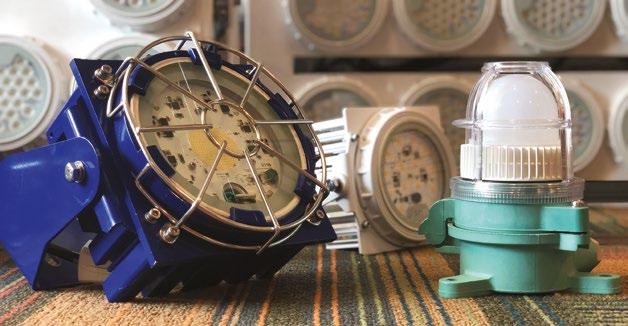


In a report about energy efficiency done by the International Energy Agency (IEA) regarding the global developments in energy efficiencies in the year 2021, the collective impact from various energyefficiency measures might prove to have a greater impact on curbing carbon emission as compared to the deployment of renewable energy, low-carbon nuclear power generation, development of carbon capture and storage and even any emission-cutting tactics.
There are various measures individuals and corporations can partake in energyefficiency schemes and one possible venture for energy savings is to retrofit conventional lighting with LED Lights.
But why LED?
LED optimises energy consumption as compared to conventional lighting. It reduces the need for maintenance through improved durability coupled with long service-life (no consumables e.g. lamp bulbs needed) and allows substantial savings to energy consumption.
With over a decade of experience and technical know-how, SOPEX Innovations Ltd (“SOPEX”) emphasises the design and development of ideal LED solutions. Missioned to ‘Save Our Planet’, SOPEX and SOP, a product line catered to hazardous and non-hazardous environments, provides reliable and innovative energy-efficient technologies, while meeting the demands of harsh marine environments.
Developed and manufactured by General Luminaire Holding (“GLH”), SOPEX and SOP are dedicated to use their
technical know-how to drive lighting technologies and innovations toward decarbonisation. Their Green Initiatives plan involves working with vessel owners to retrofit conventional lighting to LED lights with maximum luminosity and the shortest Return-on-Investment.
GLH prides itself on having one of the best and up-to-date luminaire plants in Asia. The manufacturing facility in Kunshan, China currently occupies 22,000m2, consisting of a mechanical and electronics plant. This advanced facility comprises 5 fully automatic Surface Mount Technology (SMT) lines that produce more than 200,000 luminaires and 3,000,000 LED light engines annually. The company has been awarded Best in class for ISO90001/14000/45001.
It is operated by a highly qualified international team of quality engineering, production and operations staff, and includes an on-site R&D with churns out patented products for notable brands. GLH employs a vertical integration approach, enabling them to oversee the extensive and crucial process of luminaire production.
A recent case study is the retrofitting of lightings on the Deck of Singaporeregistered Crude Oil Tanker BW Orinoco, owned by HAFNIA - 500W Halogen Floodlights to 56W LED Floodlights (1 module, wide-angled). The crew were delighted with the brightness and
coverage of the Marine IEC 60533 Certified outdoor LED Floodlights, not forgetting the more than 88% substantial energy savings and being able to do without monthly consumables replacement.
Selecting the right LED lighting for your vessel applications remains a challenge for many owners, vessel managers, or buyers. Most consumers are used to traditional fluorescent lamps, incandescent bulbs or even High-Intensity Discharge (HID) lamps, available in fixed wattage with similar lumen output, similar lamp service life, standard lamp bases and similar conventional housing. SOPEX pledges to only deliver the highest-quality range of reliable LED lighting, allowing users to maximise their investment in operations and reduce their maintenance needed. We are committed in our mission to help you find the ideal lighting for your vessel or yacht.
This approach is proven, costeffective and can be achieved within 12 to 24 months. Let us work collaboratively to do something real, measurable, and impactful.
Write to us at info@sop-led.com and we will be glad to provide you with a workable solution. u

The Starscope Monocular is the tiny hand-held miracle that instantly gives you the eyes of an eagle. In case you forgot, an eagle can read a US quarter at one mile! Starscope Monocular can zoom in from miles away! It’s weather-proof and fog-proof, making it the perfect companion for any outdoor excursion. This is just what you need for vacations, sports events, concerts, enjoying nature, or discovering what your noisy neighbours are actually doing over there. And it’s better than top of the line telescopes & lens for only a fraction of the cost!
www.monostarscope.com
At first glance, the PhotoStick Omni looks like a regular USB drive… but it’s much more than that. It actually contains a powerful program that finds, downloads, and safely stores photos and videos on any device (computers, phones, tablets) — in a single click! Digital photos, videos, music, and documents are great. They are high quality, easy to enjoy, and can be taken anywhere invisibly tucked inside a phone, laptop, tablet, or other device. But what happens when your most precious digital files are suddenly zapped, deleted, corrupted, lost, or worst yet - stolen by hackers? Nightmare! This is the moment you realise you need your own pocket cloud, a simple tech miracle that lets you find and back-up all your photos, videos, music, and documents with a single click! Here is a little secret: we have no idea how the PhotoStick Omni actually works. You don’t need to know either. Just plug it in and hit go! It will automatically search your phone and computer and save all your photo and video files on to the stick. Best of all it will work with all your devices thanks to a 3-headed attachment that make it completely universal.
https://getthephotostickomni.io


‘30’ is the first new music from Adele since the release of her third studio album ‘25’ in November 2015. The album is produced with former collaborators Greg Kurstin, Max Martin and Shellback and Tobias Jesso Jr., as well as new collaborators Inflo and Ludwig Goransson. By all accounts she has absolutely nailed it and copies are flying off the shelves. This remarkable artist continues to wow world-wide. Go grab it while stocks last!
© HMV 30 – Adele
https://store.hmv.com
Saint-Saëns’s First Cello Concerto, which opens this release, is hardly lacking in good recordings. Here, though, is a fine, flowing account, recorded with just enough resiny grit and grain in the soloist’s sound to make you feel as if seated with a good view of the stage. Astrig Siranossian plays with lyricism and passion, as well as with a rapt inward quality at the first movement’s end. The First Symphony, composed when Saint-Saëns was only 17, is an utterly charming work, which manages to combine such influences as Mendelssohn, Liszt and most especially Mozart. His ‘Laudate Dominum’ clearly inspired the lovely slow movement – the evocative opening of which also coincidentally conjures a Tchaikovsky-like soundworld (no surprise that the Russian composer and Saint-Saëns later became firm friends!). Shehata and his orchestra’s exuberant account of the Bacchanale from Samson et Dalila rounds off what is altogether a delightful album, one which may both serve as a fine introduction to Saint-Saëns and restore faith in his unpretentious art.
© Michael Beek, Reviews Editor, BBC Music Magazine. Saint-Saëns Symphony No. 1 in E flat; Cello Concerto No. 1 in A minor; Samson et Dalila – Bacchanale Astrig Siranossian (cello); Philharmonie Südwestfalen/Nabil Shehata Alpha Classics ALPHA 764


Located at the iconic National Gallery Singapore, Odette is Chef Julien Royer’s maiden effort as Chef-Owner and The Lo & Behold Group’s first fine dining establishment. At Odette, the world is their backyard. The’ve worked with some of the world’s best boutique producers to bring you Modern French cuisine that is guided by Royer’s lifelong respect for seasonality, terroir and artisanal produce. Odette celebrates the people who grow their produce, the people who cook their food, the people who serve and the people who allow Odette’s staff to serve them www.odetterestaurant.com
Why Lothar Amadeus Renhardt was killed is the unknown in this short novel of intrigue, action and adventure that has as its protagonist a common man. Blessed with a more or less affluent life he is tempted to buy a catamaran by a German septuagenarian who during the trial voyage and in the middle of a storm appears hanging from the mast. What should have been a peaceful journey turns into hell in a short time. If the first chapter was a hectic voyage on the high seas, that which follows will take you on an unexpected course with unimaginable events and dangers in places as diverse as the Mediterranean Sea off the Valencian coast and the German Black Forest. This is a good story with hints of a crime novel where a certain sense of humour is guessed that has contributed to the renewal of the genre. Easy to read, easily understood by a wide spectrum of readers, the mystery can be solved in one go, leaving you wanting more.
by Angel Fumi
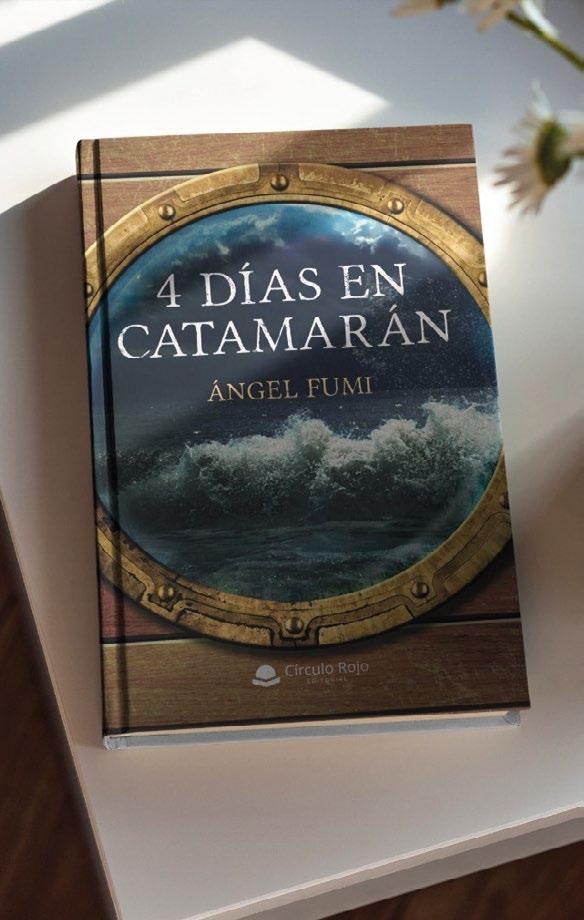
Dedicated to art historian Giovanni Romano (1939–2020), Marco Voena’s latest exhibition explores the vibrant artistic scene in Lombardy and Piemonte during the early Renaissance. The centrepiece of the exhibition is a recently rediscovered altarpiece by Bernardo Zenale of Saint John the Baptist, which had spent the past hundred years in a Benedictine monastery in Somerset. Curated by Stefania Buganza, the exhibition traces the altarpiece’s history, uniting two other works by Zenale as well as paintings of scenes from the life of Christ by his contemporaries, including Sperandio Cagnoli, the Master of the Cernuschi Pentecost and Martino Piazza da Lodi. The gallery would like to thank PKB Privatbank and Cassa Lombarda for their support.
Robilant+Voena - Milan. Tue 23 Nov 2021 to Fri 28 Jan 2022
Mon-Fri 10am-7pm by appointment.
With thanks to www.galleriesnow.net Images © the gallery and artists

